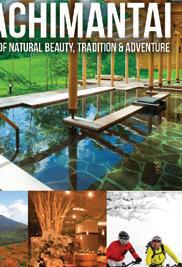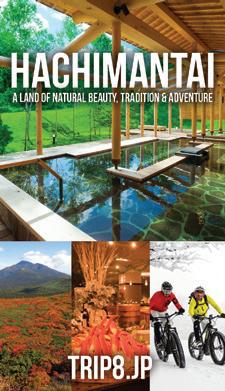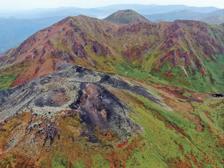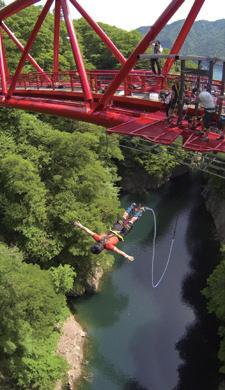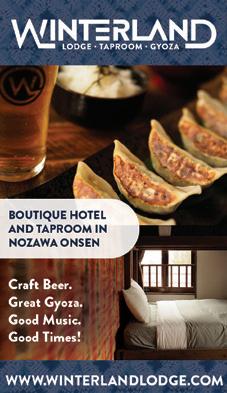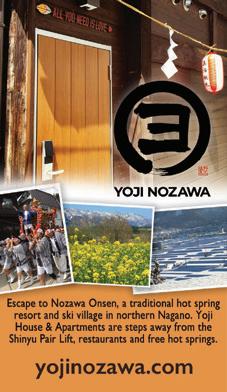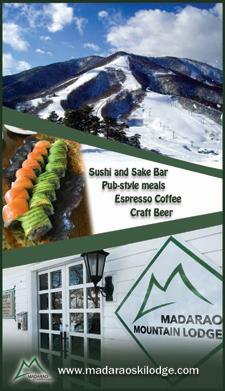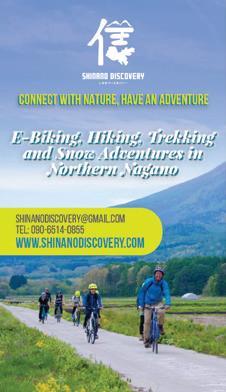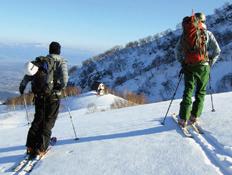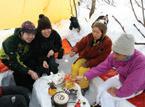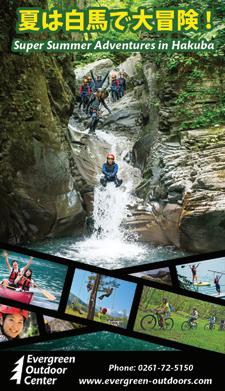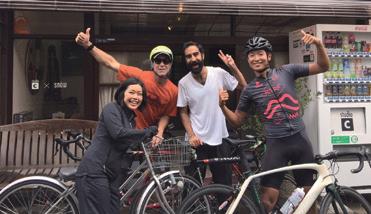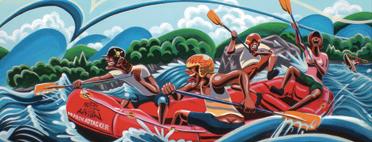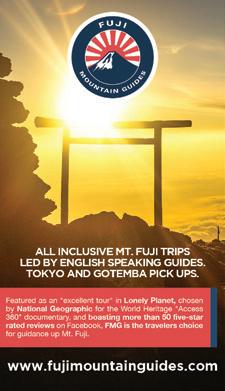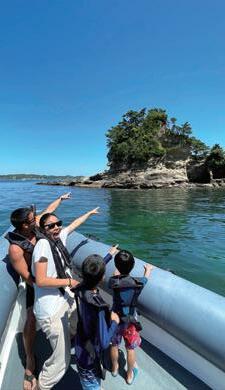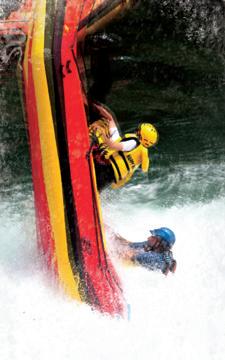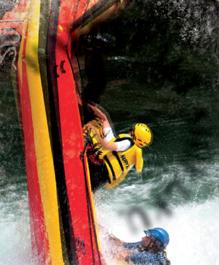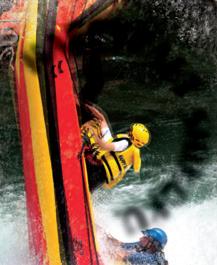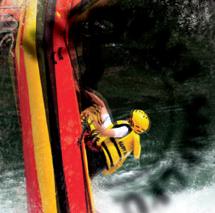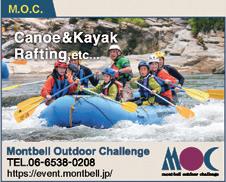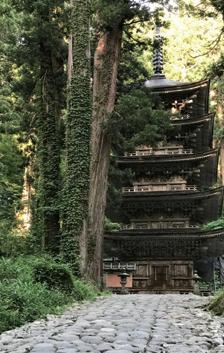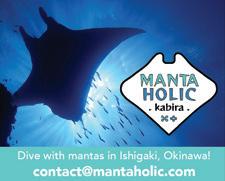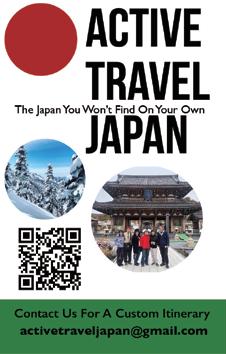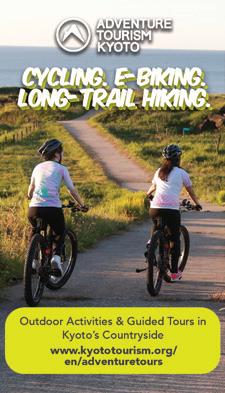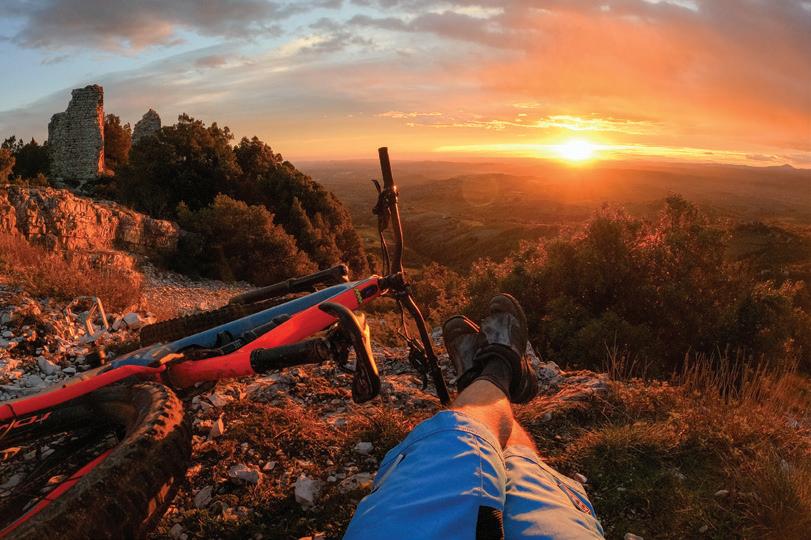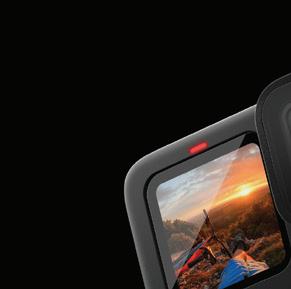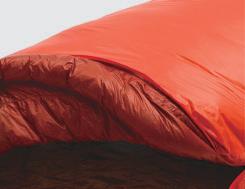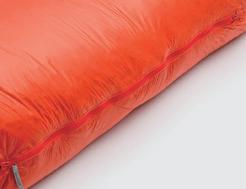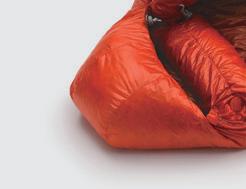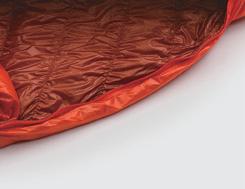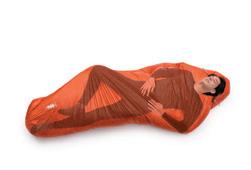

























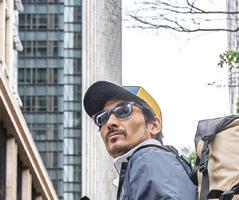

































It’s
a long three and





























































It’s
a long three and
but Japan is back. The wait is finally
travelers and tourism-related businesses. We’d hoped
a decision earlier this summer so airlines had time to increase flights to
demand, but Japan is conservative when it comes to risk and public safety, it’s part of the fabric of society and one of the many reasons we love living here. This conservative approach, however, paved the way for some head scratching decisions, pseudo openings and knee-jerk reactions that frustrated travelers and travel professionals alike. Ironically, the weak yen may have been the blessing in disguise that forced the government to turn to tourism—an industry that felt like the sacrificial lamb—to restart the economy.
And so we celebrate the restart, the relief and autumn travel this issue with some old friends. We venture down south to see Bruce Dillon, founder of Hata Surf Dojo and one of our first outdoor operators in Outdoor Japan back in the early 2000s. Bruce has been teaching surfing on the shores of Kochi for decades and he’s created a laid-back vibe at his base in Hata.
We also caught up with award-winning author Alex Kerr while in Shikoku. When I came to Japan in the late 90’s one of the first books I read was “Lost Japan.” I remember being enthralled by Alex’s knowledge and insight and amazed he had originally wrote it in Japanese (and won a Japanese literary award), then translated the book into English. It was a pleasure finally meeting Alex before he joined OJ contributors Daniel Moore and Trent Maxwell for a historical walk on part of Shikoku’s sacred henro pilgrimage.
We then head north as Quinlan Faris takes us to the active volcano known as Nanbu Kata Fuji, or more commonly, Mt. Iwate, for some spectacular early fall hiking. Down in Niigata’s Echigo Plains, Derek Yamashita takes us on a cultural tour of Tsubame Sanjo’s “open factories” where artisans produce some of the finest metalware in the world in their never ending search for perfection.
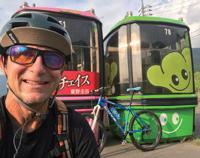
While many of us have been dreaming of traveling the last few years, solo (human-powered) adventure traveler Norio Sasaki has ventured to the ends of the earth, pulling his nearly 80-kilogram bicycle-drawn cart along the way. Sasaki shares some of the beautiful images of his journeys and how his hunt for landscapes keeps him hungry for more.
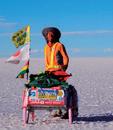
Finally it’s a bittersweet issue as we say farewell—for now—to our long-time contributor, Joan Bailey, who’s Market Watch column has become a favorite for readers interested in organic farms and farmer’s markets. If you missed any of her columns, be sure to check out archives and back issues at OutdoorJapan.com We wish her the best and will miss her contributions, while welcoming back The Naked Stranger who returns from the shadows to share his latest off-beat onsen adventures.
Autumn is the season of gratitude and we our grateful for our readers, the resilience of our friends and colleagues in Japan tourism these past few years and we are grateful that free, independent travel is back, so let’s not take it for granted. Every season is a new adventure in Japan, get out there and discover yours!
—Gardner Robinson Editor-in-Chief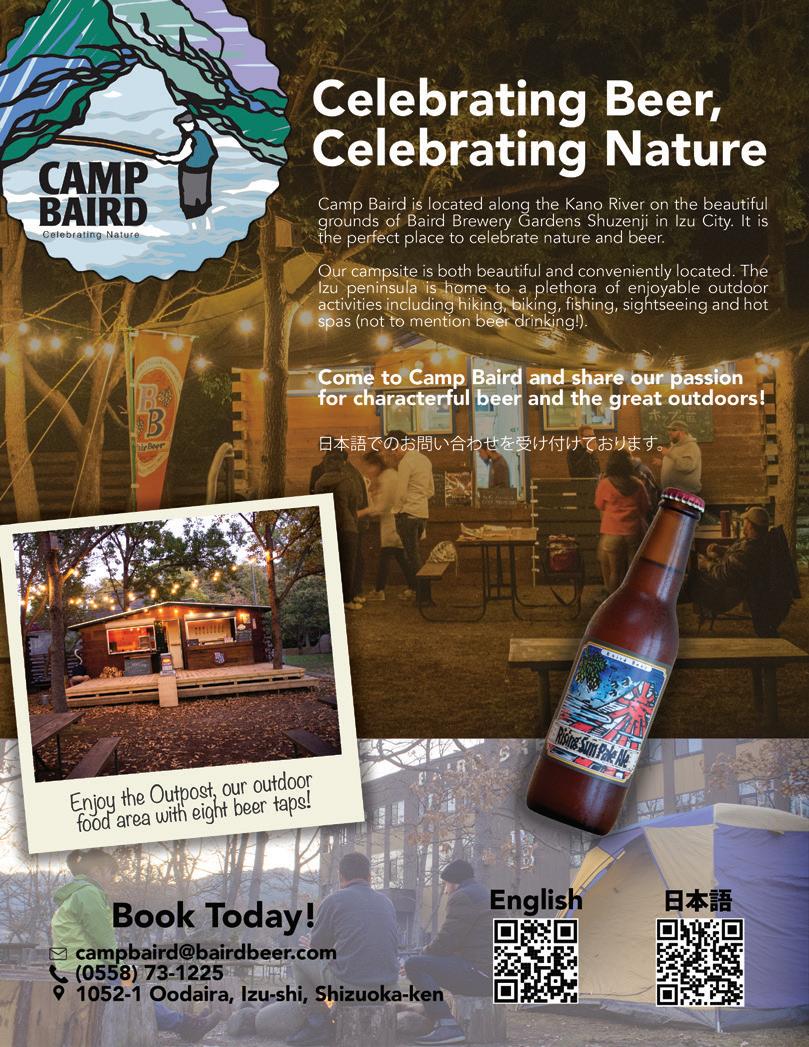
The Ike-Sun Park Farmers Market is a delicious oasis that appears every Saturday and Sunday near Higashi-Ikebukuro year-round. Nearly 20 vendors serve up everything from fresh organic produce to rice and chiffon cake as well as assorted pickles, freshly-made sandwiches, and artisan coffee. It is a true treasure trove of foodie delights.
According to Keisuke Watanabe, a member of the local Business Support Office, the market was founded in December 2020 to bring United Nations Sustainable Development Goals (SDGs) to life in the area. He estimates the market attracts roughly 1,000 people each weekend despite the pandemic shutdowns. At ten tents long and four tens wide the market is an impromptu covered shopping street where guests and vendors can gather rain or shine.
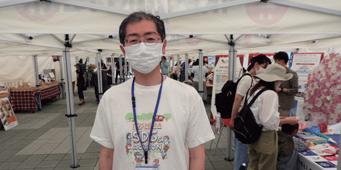
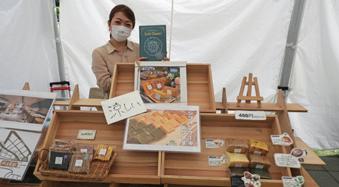
Kiyoshi Tonegawa of PiyoPiyo Farm in Saitama Prefecture is one of several organic farmers present each weekend. He began farming eleven years ago while feeling dissatisfied with his life as an academic. He started working on his father’s hobby farm while he figured things out and discovered his calling. Tonegawa comes bearing the bounty of each season such as zucchini and patty pan squash in early summer and kale, squash, and hearty greens as temperatures cool. Fresh and dried herbs dot the table here and there, and his unique blend of flowers and herbs for tea is nearly irresistible.
Next door to Tonegawa’s stall another organic farmer, Satoru Kawase, makes the trip into the city from Saitama Prefecture once a month. Jars of bright orange carrot juice form a vivid backdrop for his colorful array of small salad radishes, purple kohlrabi , and lush-leaved daikon . Farming for just five years, he shares recipes and chats with the steady stream of customers snapping up his vegetables as quickly as he lays them out.

Fresh bread, rolls, and other treats can also be found, and not least among these is the chiffon cake from Little Square Café. “I used to hate chiffon cake,” confides owner and baker, Somin Kim, “until I tried one made on the stovetop instead of the oven.” According to Kim, the method using a covered baking pan on the stove produces a moister and better-flavored cake. Each week, she brings along six flavors: chocolate, vanilla, Earl Grey, pumpkin, café au lait, and the most popular, yomogi (mugwort). “It’s my grandmother’s favorite,” Kim smiles. “It’s perfect.”
Coffee, sandwiches, pickles, rice, miso, and other foods also abound. Shoppers will find a delightful selection of unrelated, but mutually beneficial, food carts nearby for further exploration. In addition, Eat Good Place, a restaurant in the park serving meals made from fresh, organic ingredients is only steps away.
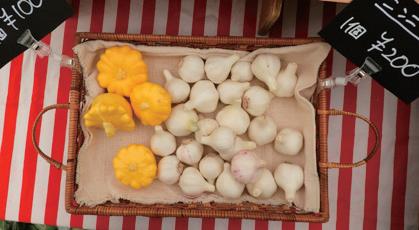
7-minute walk from Higashi-Ikebukuro Station or 11-minute walk from Ootsuka Station
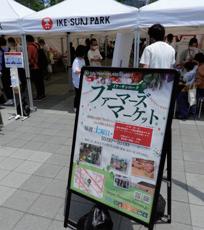


Saturday and Sunday, 10 a.m. to 4



Over the years, cider has evolved from its original tradition, of being simply fermented apple juice, to new styles and a continual deliverance of experimental blends. Like its counterpart, craft beer, the arrival of autumn signals the release of special seasonal offerings to the ever-changing cider landscape.


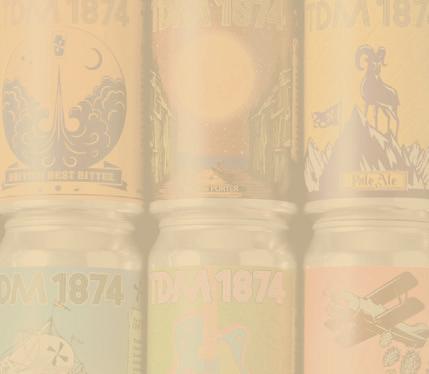
One of the latest to hit Japan is Australian import Rhubarbarella from Derwent Valley Cider in Victoria. It’s a limited release Imperial Apple and Rhubarb cider coming in with an ABV of 8%. This very popular drink combines fruity apple with rhubarb sour and a touch of vanilla to create something that’s reminiscent of Turkish delight.

For those with less exotic tastes, there are also vintage-styled ciders like Gold Rush #8 and Pomona Rolling Season Blend (2018), both from Oliver’s Fine Cider out of





The 2022 American Craft Beer Experience (ACBE) Japan is back Nov. 12-13 at the Waters Takeshiba Outdoor Event Space. Organized by the American Brewers Association, the popular event has been absent from the calendar the last two years, but it will be making a triumphant return at this cool venue. Visit waters-takeshiba.jp for access and follow them at facebook.com/ACBEjapan to learn more about the great selection of American breweries participating.
Earlier this year, Yokohama’s TDM 1874 brewery opened the Shimokitazawa Taproom adding another place to enjoy their award-winning brews besides their brewpub location in Tokaichiba, Yokohama. The Shimokitazawa Taproom will be hosting
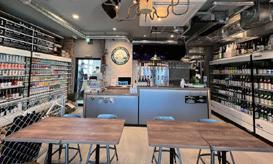
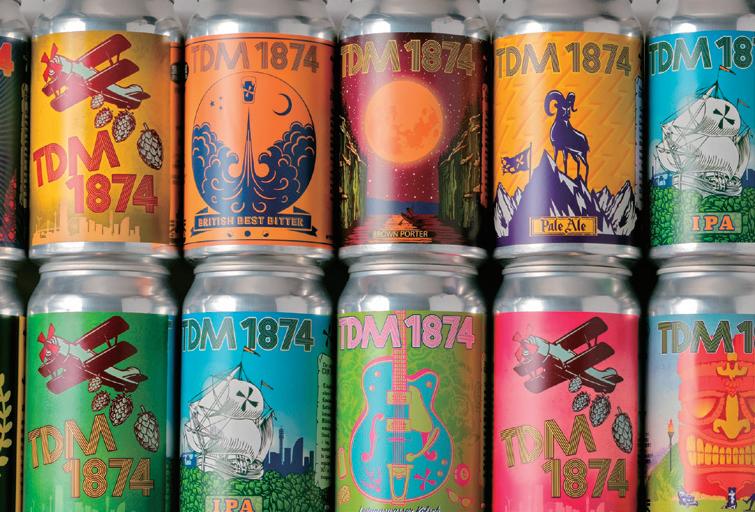
Herefordshire, England. You can find them at Tokyo shops that carry cider or online at Japan Cider Market ( japancidermarket.com).
On the domestic side, seasonal ciders are also becoming part of the yearly line-up. One such cidermaker is VinVie in Southern Nagano, whose offerings include hopped, spiced and vermut ciders. Their ciders can be ordered online at vinvie.jp (Japanese only).
Lee Reeve is an international cider consultant and the publisher of inCiderJapan , Asia’s first and only bilingual magazine dedicated to all things cider. Lee often presents at international cider events about Japan’s cider history, growing industry and current scene. He also imports and distributes world-class ciders in Japan.
a Craft Beer Festival slated for Nov. 4-6 with other selected breweries. Follow them for more information on the event coming soon at tdm1874brewery.com/pages/ brewpub02


Former Baird brewmaster Chris Poel has been busy at his Shiokaze BrewLab. When not gypsy brewing around Japan he’s serving up a great selection at his Shiokaze BrewStand Soba in Chiba, which opened in 2020, and now he’s planning to open his second location, the Shiokaze BrewStand Kemigawahama in October. Find out more at shiokazebrewlab.com
Some great craft beer from the mainland is making its way to Okinawa Island in November, when The Okinawa Bottle Shop opens up. The small shop in Yomitan will feature selected fresh craft beer from around Japan, including local Okinawa beers, as well as showcase other selected craft beer, cider and refreshments. The location in the center of Okinawa Island means fresh beer is never far away. Check for updates and the official opening date at okinawabottleshop.com
Sea to Summit
The last of Montbell’s popular outdoor series for the year concludes in Miyagi, Nagano and Mie prefectures. Take in the autumn landscape while canoeing, cycling, trekking and other means of human-powered movement. Participants can compete solo or as a team.
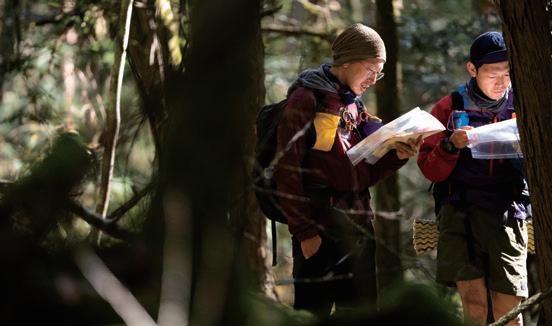
When and Where: Oct. 8-9: Kamimachi, Miyagi Oct. 15-16: Chikuma River, Nagano Nov. 12-13: Kihoku, Mie Web: seatosummit.jp
Head to northern Nagano for this 27-kilometer race that features trail and road courses. You’ll be running the Hijiriyama Trail with great views of the surrounding mountains, vineyards and koyo (autumn leaves). Celebrate after the race with a long soak in an onsen and delicious local cuisine.
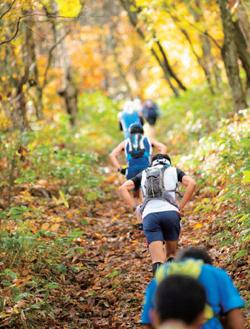
When: Oct. 23 Where: Omi, Nagano Web: samuraisports.org
Kanazawa Marathon
Combine a trip to the scenic Kanazawa area with a marathon race. This course will pass Kanazawa’s iconic attractions such as Kenrokuen Garden, the Ishikawa Gate of Kanazawa Castle, Higashiyama and temple towns.
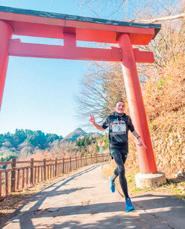
When: Oct. 30 Where: Kanazawa, Ishikawa Web: kanazawa-marathon.jp
Osaka Yodo River Citizens Marathon
This race follows the riverbank and is a great entry into marathon running with its easy access and relatively minimal elevation gain. There is also a half-marathon which starts at 9 a.m.
When: Nov. 6 Where: Moriguchi, Osaka Web: osaka42195.com
One of the toughest adventure events out there, the OMM is a mountain navigation race held in extreme environments. The OMM race is held in a different region across Japan every year.
Nov. 12-13
Where: Okumino, Gifu Web: theomm.jp
The classic 20-obstacle, fivekilometer Stadion Race is a test of speed, strength and willpower— and great for beginners and experts alike. There will also be a kids’ race the same day.
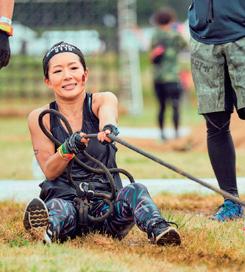
When: Dec. 3
Where: Kurazushi Stadium, Osaka Web: spartanracejapan.jp
Oise-san Half Marathon
Tour the sacred region of Ise by participating in this half marathon. This unique race takes you past the famous Ise Jingu, one of Japan’s most revered Shinto shrines, and Edo-period landscapes. Before or after the race, enjoy Mie’s famous seafood and cultural heritage. There is also a five-kilometer race held on the same day and a walking and barrier-free race the previous day.
When: Dec. 4 Where: Ise, Mie Web: city.ise.mie.jp/marathon
Nara Marathon Run through Japan’s ancient capital in this race, which starts at Konoike Stadium and takes you through historic towns and impressive temples and past Nara’s famous inquisitive deer. There are also three-kilometer and ten-kilometer courses available.
When: Dec. 11
Where: Nara City, Nara Web: nara-marathon.jp
Experience a different side of Tokyo out west at Mt. Mitake. This race starts at the base of Mt. Mitake with a steep paved climb before the trail. Watch out for steep descents! Run through sleepy local neighborhoods, climb Mt. Nabewari (famous for its nabe hot pot served at the mountain hut) and traverse Okunoin. The race finishes at Musashi Mitake Shrine.
When: Dec. 11
Where: Mitake, Tokyo Web: samuraisports.org
Catch the last autumn session of this fascinating outdoor art event before it closes for another three years. Setouchi Triennale’s contemporary artwork is spread out among 12 islands in the Seto Inland Sea between Kagawa and Okayama prefectures. Themed “restoration of the sea,” the event aims to revitalize the local environment and community after severe depopulation. The autumn session features permanent, site-specific installations and single-season exhibitions. The event is also a unique opportunity to experience Japan’s traditional island culture.
When: Sept. 29 – Nov. 6
Where: Seto Inland Sea Islands Web: setouchi-artfest.jp
Nicknamed the “real Fuji Rock” for its idyllic location at the foot of Mt Fuji, this music festival is a laid-back two days of camping, rock, Indie and dance music by international and local artists. Workshops, morning yoga and activities for children are held around the two main stages.

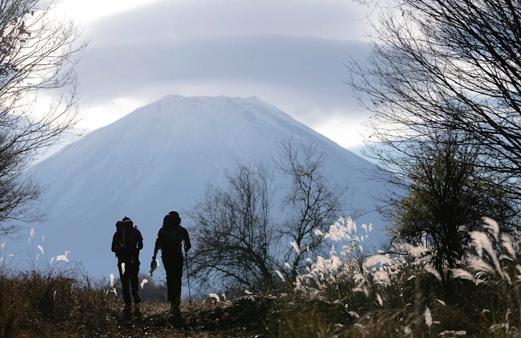
When: Oct. 8-9
Where: Asagiri Arena, Shizuoka Web: asagirijam.jp
Live music and organic brands come together for this music festival and eco-friendly market held in the middle of the city.
When: Oct. 22-23
Where: Yoyogi Park, Tokyo Web: earth-garden.jp

Enjoy dance music at this seaside park not far from Tokyo. This festival is popular for its all-night music performances and lights.
When: Oct. 22-23
Where: Chidori Park, Kanagawa Web: brightness-music.com
Japan’s surf, skate and snow scene is celebrated at this weekend film festival dedicated to yokonori , literally translated as “riding sideways.” Showings are held in the Shonan surf town of Chigasaki. Purchase tickets online.
When: Nov. 4-6

Where: Aeon Cinema Chigasaki, Kanagawa Web: yoko-nori.net
Head to Niigata’s mountains before the snow to enjoy the last of the green season. This art festival is an immersive way to travel across six areas in Echigo, the former name for Niigata Prefecture. View contemporary art exhibitions, try local cuisine and visit popular permanent exhibitions like the Tunnel of Light and the House of Light by James Turrellare. This year the festival also welcomes 114 new artworks. There are guided day-trip bus tours to and from EchigoYuzawa Station, which include lunch.
When: Until Nov. 13
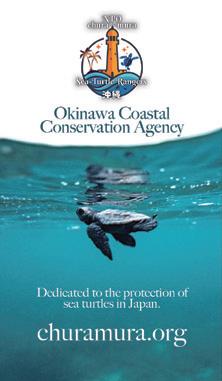
Where: Echigo Tsumari, Niigata Web: www.echigo-tsumari.jp
Club Med Kiroro
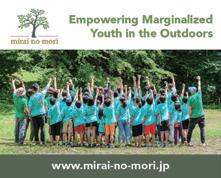
Japan’s third Club Med resort is set to open this winter in snowy Kiroro, Hokkaido, This all-inclusive winter resort will open part of its resort in December: the Kiroro Peak with all-inclusive packages including a gourmet buffet-style dining, hot spring access and ski passes. Packages start at ¥38,000 per person, per night and are for people 12 and up. Kiroro Grand opening next year will target families with young children.
Web: clubmed.co.jp
Jidai Matsuri
Step back in time as people parade in traditional Japanese garments through Kyoto, reflecting the region’s 1,200-year history. The procession starts from Kyoto Imperial Palace, traveling along Oike-dori to Heian Jingu Shrine.
When: Oct. 22
Where: Kyoto Imperial Palace, Kyoto Arashiyama Momiji Festival
Celebrate the changing autumn leaves at this annual festival in iconic Kyoto. Boats will parade on the river around Togetsu Bridge, with elaborately dressed characters on board reflecting the Heian Period nobles.
When: Nov. 13
Where: Arashiyama, Kyoto Web: arashiyamahoshokai.com
Rikugien Gardens Autumn Illumination
View kouyou under the night sky at Rikugien Gardens. Built during the Edo Period, this daimyo teien belonged to a feudal lord and remains a popular destination to view the autumnal foliage.
When: End of Nov. - Beg. of Dec. Where: Rikugien Gardens, Tokyo
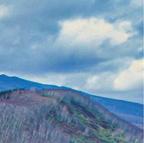
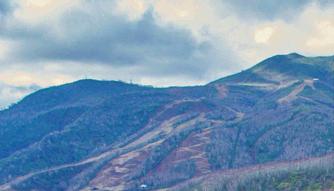
Niseko’s Twin Peaks Bike Park is an ambitions new project by the Niseko Area Mountain Bike Association (NAMTBA) to create a freeto-use mountain bike park open to the public. Located in the heart of the Niseko resort area, the new MTB park will feature beginner, intermediate and advanced riding across six trails, more than 21 kilometers of terrain and 200 meters of elevation differential. There will be a dedicated children’s balance bike area as well as a skills park for learning new techniques and building confidence.
Twin Peaks is the first project for NAMTBA, a registered non-profit organizations based in Niseko, and they see the park as a first step for creating new opportunities for riders as well as connecting future trails in and around Niseko. Their board is a diverse mix of nationalities, genders, ages and mountain bike riders, but they all share a vision of turning Niseko into a sustainable, world-class mountain bike destination.

Getting approval to use, and build on, public lands is tricky, but the team has worked closely with town and forestry authorities to move the
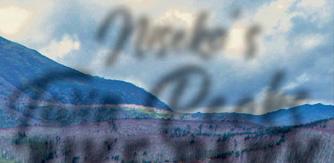
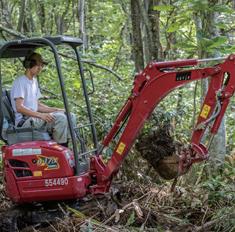
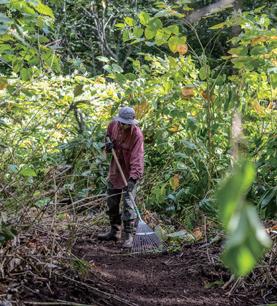
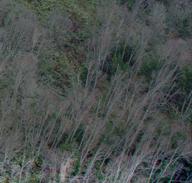
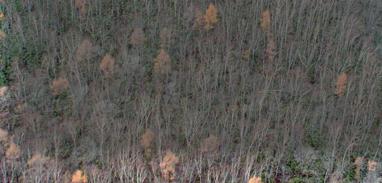

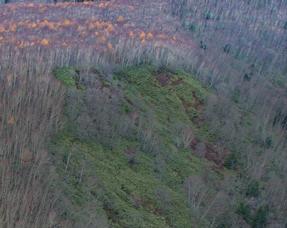
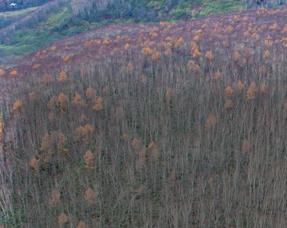

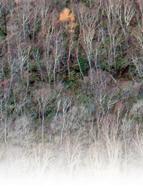

process forward. When progress stalled it could have been perceived as reluctance, however the team understood the local stakeholders were simply doing their due diligence—finding out who NAMBTA was, making sure NAMTBA’s motivations were genuine and, understandably, making sure NAMBTA could deliver.
“We were really put under a microscope,” says Miles Zeorlin. “But it feels good to have earned their support.”
The project is being built in three stages, with the goal of completing Stage 3 during the 2023 green season. To build an international-caliber park, they brought in an international team lead by Allegra Tourismus, a renowned trail design company from Switzerland who has a U.S. and New Zealand-based crew building trails one meter at a time. There is talk of having a soft opening with eight kilometers of trails to ride in October this year, but check the website for updates. Once completed, the park will be free and open from May 1 - Oct. 31 each year.
The pandemic hit local resort businesses in Japan hard, but the Niseko community have pitched in with generous donations of time and funding. If readers would like to support the cause, a crowdfunding drive is on now with a chance to win some great prizes. Each ¥5,000 ticket sold funds a further 2.5 meters of trail. T-shirts and other merchandise are also up for grabs and 100% of raffle and merchandise proceeds will be put towards continued trail building. Prizes include a new Trek Rail E-bike (worth ¥740,000) a ¥500,000 heli ski and accommodation package and more. Participation in the raffle is open to the public in Japan and overseas. For more details, terms and conditions visit namtba.com/get-involved/ crowdfund/
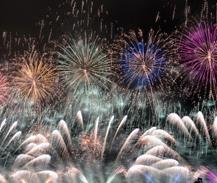
Summer time in the Tohoku Region is the time of year when the normally quiet and tranquil communities of the north explode in vibrant colors, with the passion of the locals on full display. After three years of painful cancellations many of Tohoku’s most famous summer festivals were finally able to be celebrate the season and the the traditions, bringing back a much needed sense of community and excitement to the people here.
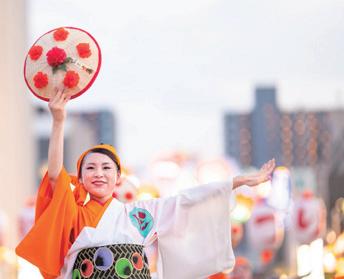

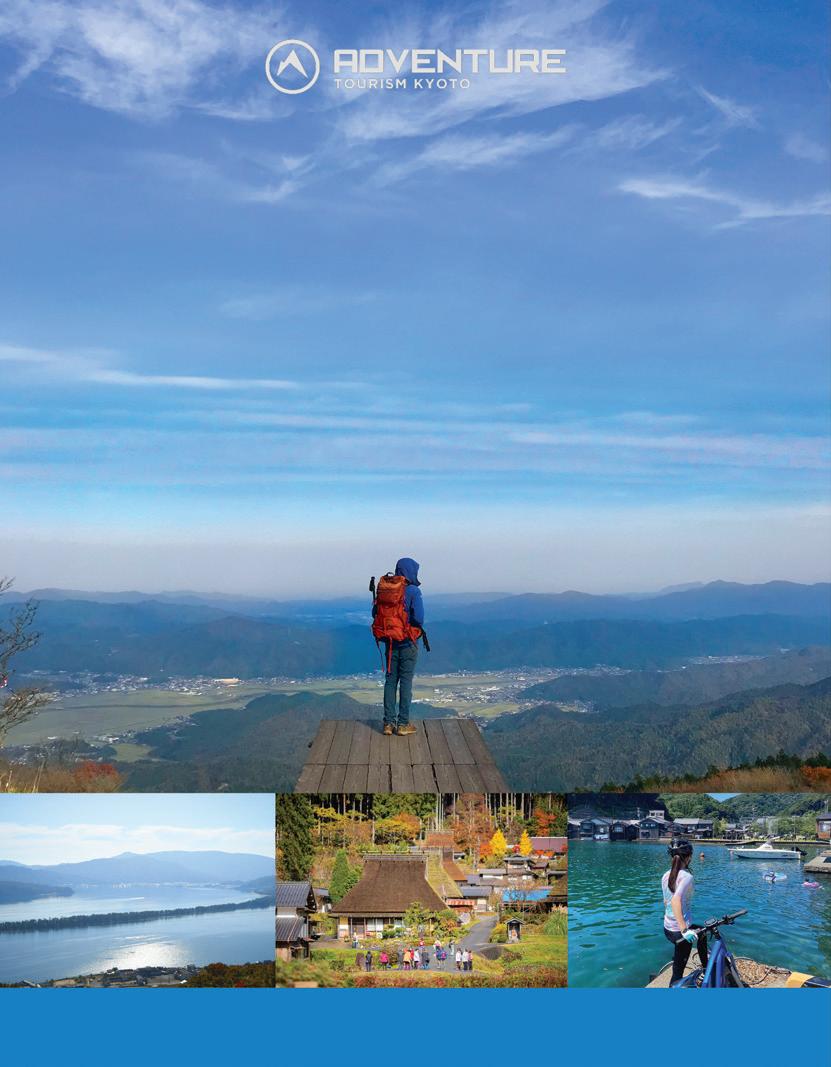
Even the old capital of Kyoto has its roots. A wild and ancient Kyoto awaits beyond the city.
Step into a world of 1,300 year old pilgrimage routes, cobblestone-paths walked by samurai, generals and demons. Cycle through a historic thatched-roof village and folklore rich mountains to a UNESCO Global Geopark Coastline.
Adventure Tourism Kyoto believes the true value of travel lies in the transformations that occur within travelers through authentic experiences, harmony with the environment and sustainably supporting local communities.







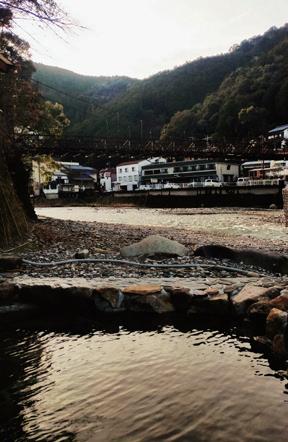
If you are finding it hard to get a sense of direction during these crazy times, perhaps a little confused or lacking in motivation, the doctors may try and prescribe you pills, counseling or life coaches. Fear not, you can forget all that psychobabble and new age mumbo jumbo because all you need is the counsel of a good, old-fashioned threelegged crow.
You read that right. If you really want to fill that cavernous void in your life then you need a crow, with an extra leg, preferably god-like, such as Yatagarasu ( 八咫烏)
The Naked Stranger was recently in Wakayama Prefecture at the behest of this ornithological scallywag, who coo-

ed and caw-ed, luring him away from his comfortable materialistic malaise, down to the world heritage region of the Kumano Kodo Trail, to search for a good walk, a long soak and some well overdue spiritual awakening.
Yatagarasu. Crow-god, symbol of guidance, Shinto rock-star, avian freakshow and just an all round manabout-town. Yatagarasu. He who brought Emperor Jimmu out of his slump in 600 B.C., guiding him from obscurity in the rugged mountains of the Kii Peninsula to immortality as Japan’s first emperor. Yatagarasu. The symbol of the Japanese Football Association; the crafty crow coached the Japanese nadeshiko women's soccer team to glory in the 2011 World Cup. Call him what you will, but he gets results and has the resume to back it up.
The Kumano Mountains are a place of beauty. Sacred cypress forests scarred by rivers and streams and the cumulative sandal-prints of nearly 2,000 years of bedraggled hikerstumbling and toe stubbing, searching for an ascetic purity that only someone humping a pack over hundreds of kilometers of mountain terrain will ever understand.
The harder it is, the higher you will fly under the tutelage of your new, three-legged deity. He will be by your side, like a Pomeranian pooch, yappy and persistent and ever-present, cawing, coo-ing and cock-a-dooing you until eventually you arrive at a kind of
Montbell-inspired version of Nirvana— a flatland heaven where your feet won't ache, your Gore-Tex jacket will never crumple or smell even remotely of wet dog.







First, however, you will need to climb the stairs on the Kumano Kodo Trail. And many of them there are. Your feet will ache and your gear will smell like a wet dog.
But somewhere through the burning calf pain, the cankers between your thighs and the general delirium from eating convenience store sandwiches for too many days in a row, there is a spiritual awakening—a golden road. And at the end of this golden road lies an onsen as old as the Emperor Jimmu himself, still gurgling out a rusty pipe that looks like the exhaust of your first car and smells like a middle-school science experiment gone awry. It could well be the best bath you will ever have.
And that is the essence of the lesson of Yatagarasu. If he crows at you, you must go. All cankers will subside. Calf pain is transitory. Seven-eleven sandwiches will become palatable again. But the Kumano Kodo Trail will remain.
• Kawayu Onsen is one of the three hot spring villages that make up the Hongu Onsen-kyo area. The other two are Yunomine and Watarase hot springs. It is close to the Kumano Kodo trails and there are many different trail heads that are easily reached by bus.
• The senninburo is famous in the area. It is a large free open-air bath in the middle of the Oto River that is open from December to February. Other months, you can dig your own by the side of the river.
Address: Tanabe-shi, Wakayama 6471717

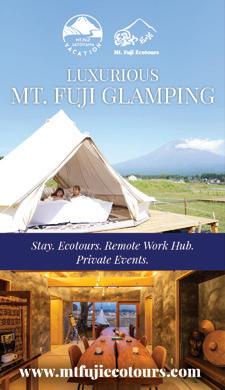
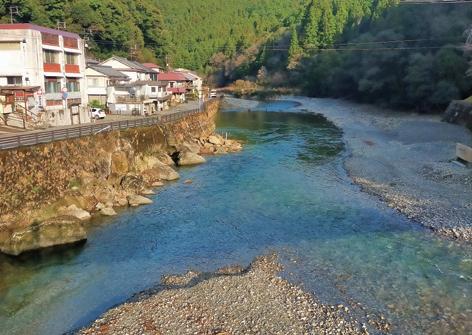


Hours: Open daily from 5 a.m. till Midnight if you stay, 2 p.m. to 7 p.m. for visitors.
Cost: ¥800 for outside visitors.
Tel: (0735) 42-1011



Web: kawayu-midoriya.jp
Rating:
The Upside: Sit out in the open air by the river in a mixed bath with your family and then have the hotel drop you at one of the trailheads of the Kumano Kodo Trail the next day. Kawayu is a pure kakenagashi (natural hot spring from the original source) that comes out at 73 degrees. You can even bring a shovel and dig your own bath straight into the river, just make sure you mix a little cold water in with it!
The Downside: It's pretty isolated, so don't expect any nightclubbing.
• Juniyakushi is the guardian deity of Kawayu Onsen. It is said that praying to Juni-Yakushi while in the hot water helps cure nervous and internal disorders.
• You can also drink the onsen water which is thought to be good for curing gout, diabetes and digestive disorders.

• Yunomine Onsen Tsuboyu is close by and is considered to be Japan's oldest hot spring. It was discovered 1,800 years ago and is registered as a World Heritage site. The water can change color up to seven times a day.

Nearby Attractions: Kumano Hongu Taisha, Kumano Kodo Nakahechi pilgrimage routes, Senninburo River Bath, Yunomine Onsen, Watarase Onsen, Nachi Waterfall, Nachi Taisha Shrine, Nachi-Katsuura Town.
Access: From Tokyo Station, take the Nozomi or Kodama Shinkansen to Nagoya. Change at Nagoya Station to the limited express Nanki to Shingu Station in Wakayama. From Shingu Station you can get an hourly bus to Hongu Taisha. Hongu Taisha Shrine is about a 10-minute taxi ride to Kawayu Onsen.
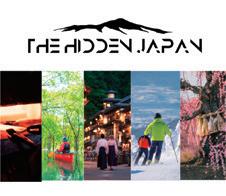


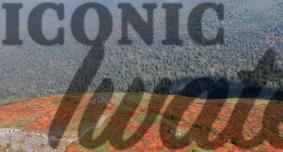
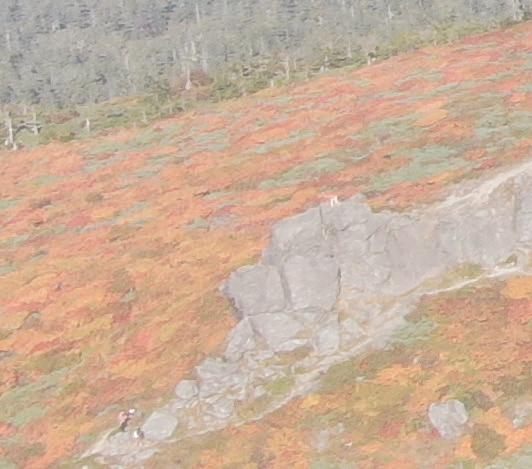
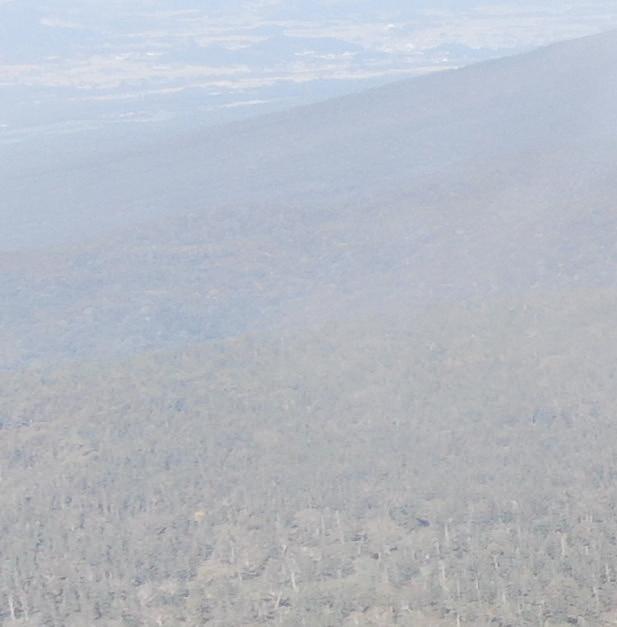
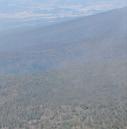
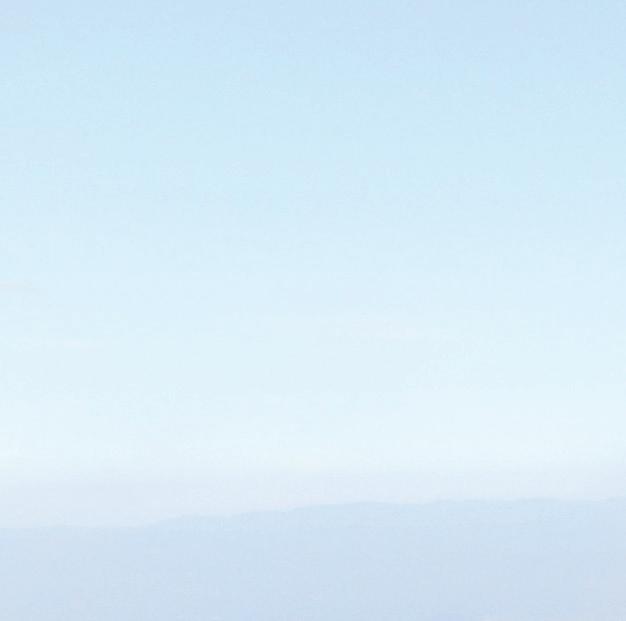

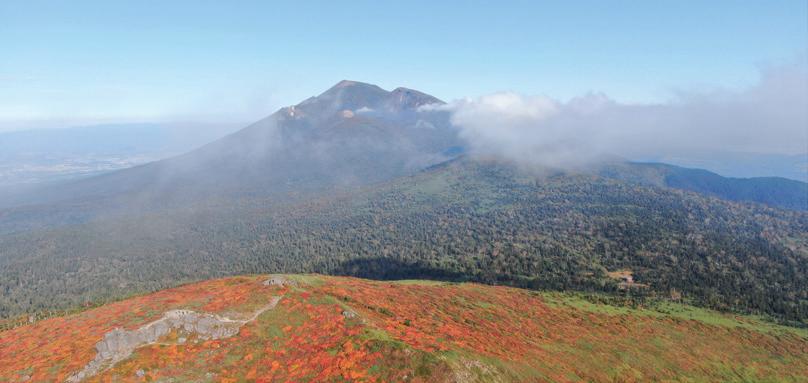
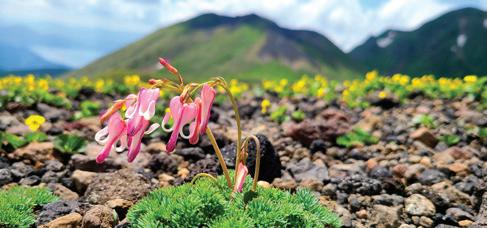

Early autumn is arguably the best time of year to experience the glory of exploring Japan’s volcanic landscape on foot. Every year hordes of people take on the challenge of hiking Mt. Fuji, leading to a parade of GoreTex from the trailhead to the summit of the most climbed mountain in the world. An alternative to this spectacular, yet overcrowded experience, can be found in Japan’s deep north, on the active volcano known as Nanbu Kata Fuji, or more commonly, Mt. Iwate.
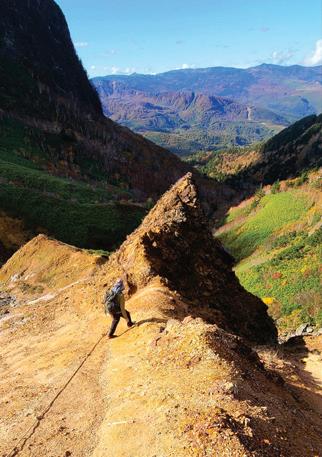
Mt. Iwate ( 岩手山 ) is called Nanbu Kata Fuji ( 南部片富士 ), or “the one-sided Fuji of Nanbu” (Nanbu being the feudal name of the area), because the eastern flank of the mountain resembles the iconic shape of Mt. Fuji. The variation in landscape and rich history of this volcano, which you can experience through any of the longer trails, rivals—or even surpasses—what you might find on Mt. Fuji. But be warned, the physical challenge of the longer trails exceeds that of the most popular trails up Fuji-san in distance and ascent.




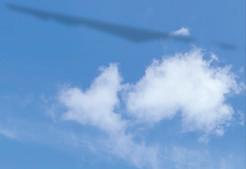


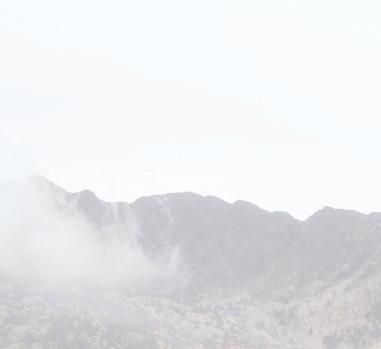
First, a little background. About 1,200 years ago a great general was sent north to subdue the Emishi (the lost tribes of northern Honshu) and encountered Mt. Iwate on his campaign. He established a shrine near the summit to appease local demons and it has been revered as a sacred mountain ever since. Later, Mt. Iwate became a focus of Buddhist worship, and even now the crater on the summit is ringed by 66 Buddhist statues of Kannon, the Bodhisattva of Compassion.
During the Edo Period, yamabushi (ascetic monks) would ascend the mountain at night, worship at sunrise, and pray for a bountiful harvest and good health for the surrounding villages. With the dawn of the Meiji Era toward the end of the 19th Century, Buddhism was suppressed and the temples became Shinto shrines, though the Buddhist statues remain on the summit. Many locals still hike it as a personal pilgrimage praying both to the Shinto and Buddhist divinities at the peak.
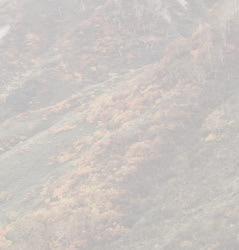
There are seven main trailheads around Mt. Iwate. While they all reach the summit, the diversity of landscapes, physical challenge, and time required completely vary. Nanataki Trail ( 七 滝コース ), which, while not (quite) the longest, offers four distinct areas to explore—leaving hikers feeling like they’ve hiked four mountains, not one. (See “Other Trailheads” for a brief outline of the other trails on the mountain.)


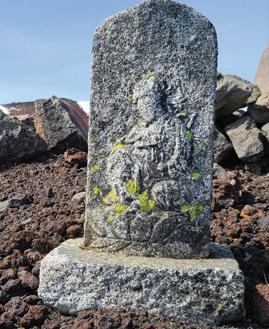
The Nanataki Trailhead is located near the Prefectural Forest Campground in Hachimantai. The first section of the hike is a gradual incline through a deciduous forest, which explodes into color in early October. You’ll pass a number of waterfalls during the first hour, the largest of which is Nanataki Falls, from which the trail derives its name. People hike out to this waterfall in the winter as well when it freezes into massive ice falls. During the summer, or a hot day in early fall, you can strip down and cool off in the river just below the falls—just don’t forget a towel!
The next section is Ojigokudani ( 大地獄谷 ), or “The Great Hell Valley.” It’s a steep ascent over an active volcanic area where sulfur vents are belching steam and the ground itself is a mixture of bright yellows, oranges and reds. About 130 years ago there was a sulfur mine here, though it was abandoned when larger facilities were opened to the north. You might notice a small bubbling caldera to the right of the trail created by a minor volcanic eruption in 1930.
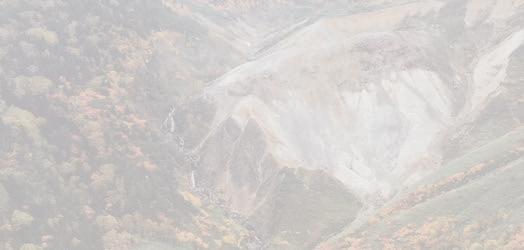
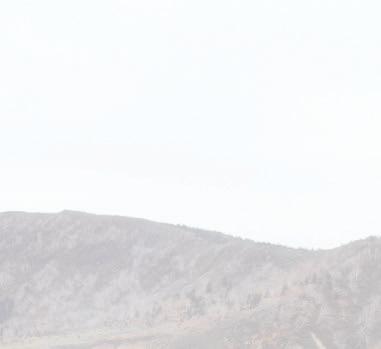
This will bring you to the first junction, where you’ll want to turn right, toward Onigajo ( 鬼ヶ城 )—the Demon’s Castle. (Note, you’ll return from the other direction on your way back down.) After just a few minutes you’ll reach the ridgeline and begin what many people consider the most stunningly beautiful section of the hike. The Demon’s Castle was indeed believed to be the home of demons, and the rugged cliffy ridge walk does not disappoint. Many people I’ve taken over the last few years (including local Japanese people) have exclaimed how they had no idea this dramatic landscape existed in Japan. There’s a bit of scrambling and climbing, but nothing requiring special gear. The main challenge is to keep moving when you want to stop and gaze in slack-jawed awe at the views, or take photos every two minutes.
The summit area of Mt. Iwate is actually rather similar to that of Mt. Fuji in that you walk a circuit along the rim of the volcanic crater in the center. This part feels like paradise, and is often above the clouds. If you can, spend a night at the 8th Station lodge, so you can enjoy a sunset and sunrise to rival anything you might experience on Mt. Fuji. (It is ¥1,700 for a spot at the lodge; spring water for drinking, nice bathrooms are available—and a woodburning stove.)
If you’re with a guide that can arrange transportation, returning down a different trail is a great way to see more of the mountain, and there’s a slightly different route going back to the Nanataki Trailhead as well. Instead of doing the ridge walk across the Demon’s Castle, you can go directly down through the valley called Ohanabatake ( 御花畑 ) or "flower field,” and enjoy the view of the towering cliffs from below. This trail meets back up with the original trail just above the Great Hell Valley.
It's just under 20K round trip with an ascent of around 1,600 meters. Depending on your pace it can take 8 to 12 hours for most. If you don’t want such a strenuous adventure, there are a number of shorter trails, or ideally, you could hike up one day, spend the night in a lodge, and hike down in the morning after seeing the sunrise.

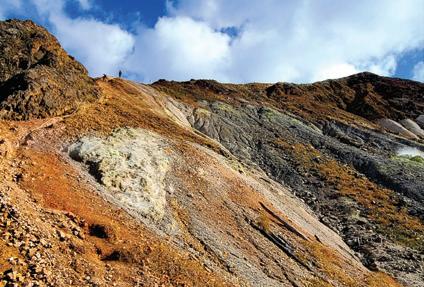
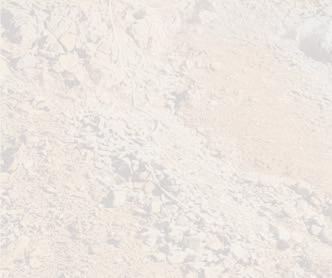
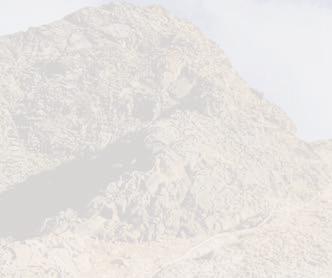
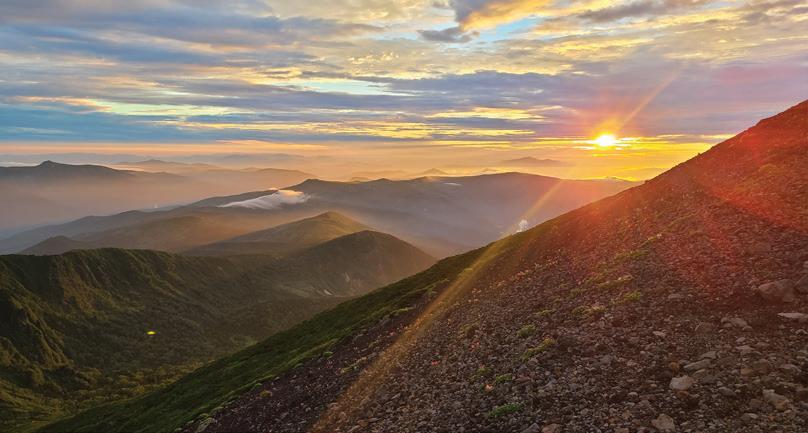





Quinlan Faris has been living in Japan for more than 20 years, the last 12 in the wilds of the north. He is based in Morioka, Iwate, where he wears a variety of hats—working as a guide, inbound tourism advisor, narrator, and video creator—all while running a small Airbnb out of the building where he lives. You’ll most likely find him up a local volcano, hiking through a storm or foraging for wild edibles along a mountain stream to feed his Airbnb guests or entertain his YouTube subscribers. Follow his adventures at youtube.com/c/GoNorthJapan and on Instagram @quinlan
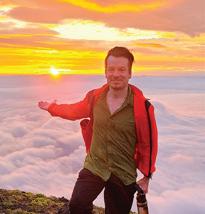

















Umagaeshi (馬返し): This is the shortest and most popular route; about 11K round trip with an ascent of 1,440 meters. There are water sources at the trailhead and 8th Station, so you only need to bring one or two liters of water with you. It splits into the new and old trails. The new trail is easier and goes through the forest, while the old trail goes out over the rocky terrain with panoramic views of the surrounding valley, but has more exposure to the sun.

Omisaka (御神坂): This trail is about 12K with an ascent of 1,550 meters. The first half is through the forest, with the upper part going above the tree line. There is often a steep area with slippery snow towards the top of this route that doesn’t melt until late June.
Yakehashiri (焼け走り): One of the most popular routes that is about 13K with a 1,500 meter ascent. This area is a long gentle ascent up volcanic gravel for rather long parts. Flower lovers favor this route in late June and early July for the numerous alpine and volcanic flowers here.
Matsukawa (松川): The longest of the main routes. Round trip is roughly 24K with an ascent of 1,550 meters. Only recommended for advanced hikers or those planning to spend the night. It crosses Mt. Kurokura, another active volcano, and the Demon’s Castle—it’s all glory and adventure!
Amihari (網張): The Amihari Ski Resort operates the ski lifts during the fall for visitors both hiking all the way to Mt. Iwate, and those that just want to enjoy the beauty of the fall colors from the ridge above the resort. Distance and ascent depend on if you use any of the three lifts on your way there or back. Better to spend a night if you start from here given the distance and time involved. v
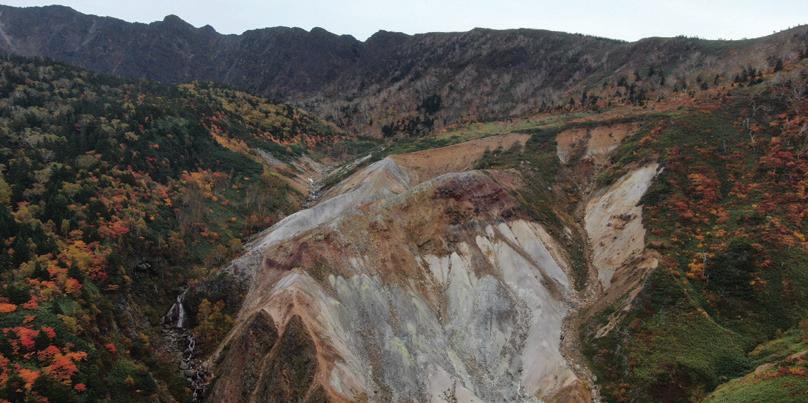
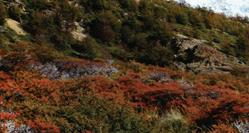




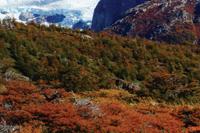
Adventure traveler and photographer Norio Sasaki is out to push his limits on solo travel. His expeditions have taken him from Prudhoe Bay, at the tip of North America, to “the end of the world” at Ushuaia, the southernmost tip of South America. He is a self-proclaimed fuukei (landscape) hunter, walking for miles across every type of terrain and weather, dragging along his nearly 80-kilogram bicycle-drawn cart— with a big smile on his face. Sasaki shares his unusual ways of travel and what adventure travel means to him.
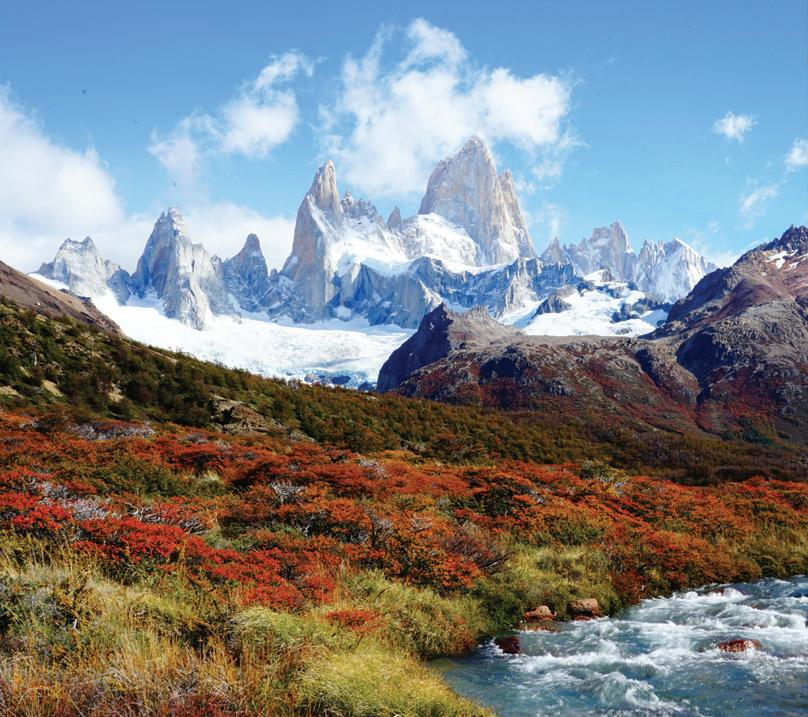
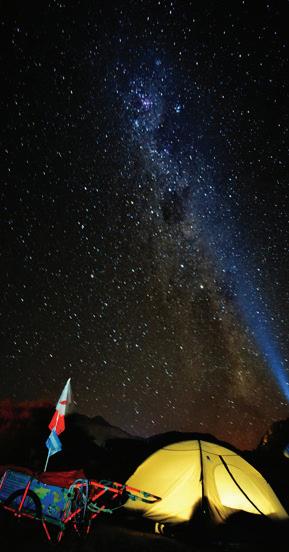
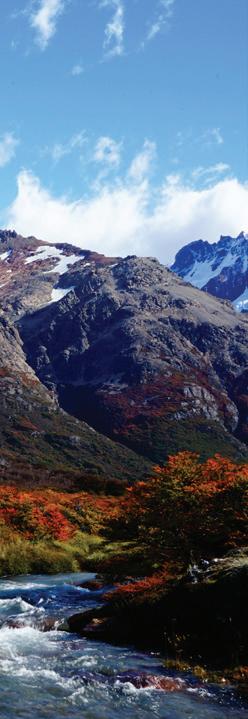
I used to be in the Japan Maritime SelfDefense Force, traveling around Japan and overseas. The biggest thing I discovered is if you have tairyoku (endurance) and konjo (guts), you can set your mind to do anything. I learned from my mistakes, gained a lot of experience taking on jobs such as lifesaving in Okinawa, ocean guiding, ski patrolling and outdoor guiding.
When I was 25-years-old, my mother sent me a book by Naomi Uemura, a famous Japanese adventurer known for his solo exploits. Uemura was the first person to reach the North Pole solo, raft the Amazon solo and climb Denali solo. The book really
inspired me to question how I think about travel. One of the major benefits of travel is returning with lessons learned, not just fun memories. Humans learn through hardship and endurance, and adventure travel helps you mature.
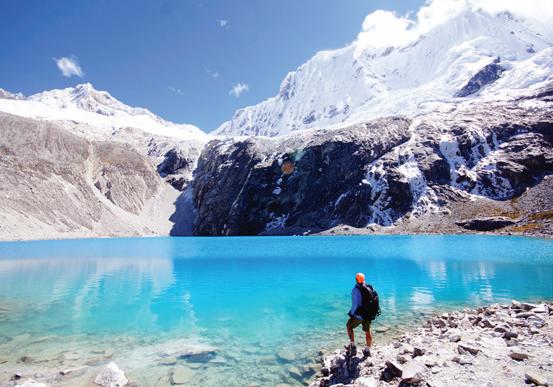
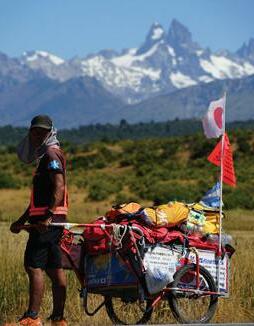
We don’t know when we will die; I wanted to live a life with no regrets, so I set out on my own adventure. I also wanted to build up strength as I spent most of my career protecting people’s lives.
You are often seen traveling with a bicycle-drawn cart.
In my teens, I cycled around various parts of Japan. As an adult, I wanted to rely on human-powered motion, so I started off
with cycling. I also wanted to be as self sufficient as possible, which meant bringing my own tent, food, supplies and more. That’s when I added a custom-made riyaka —a bicycle-drawn cart. Literally translated, it means “rear car.”
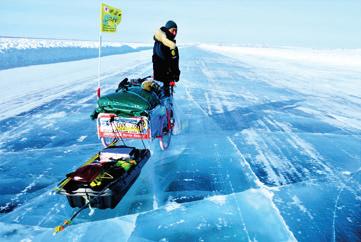
Yes, the cart uses durable, Tannus nopuncture tires from South Korea. I worked with a bicycle shop to put it together. It’s made out of aluminum so it’s light and I can carry it on the plane.
I spent two years traveling Japan, then wanted to go somewhere I couldn’t speak Japanese. I boarded a ferry from Yamaguchi Prefecture to South Korea. One experience that stood out to me was when I was going to ascend a mountain with my riyaka. This man tried to stop me saying it was too difficult, but I tried as much as I could to convey my passion. We weren’t speaking the same language, but he could see that and decided to support me, and even brought me food.
After that trip, I wanted to challenge myself further so I headed to the deserts of Australia. It was physically draining as I pushed myself in extreme heat and harsh conditions. I didn’t have reception for three weeks so there was no way for
me to contact anyone. I spent lots of time talking to Toramaru, which is what I had named my riyaka, while listening to English conversation podcasts.
When the 2011 Tohoku earthquake happened, I immediately went to volunteer. It was a grim experience as I saw firsthand the effects of the triple disaster: pulling bodies out of the water, the nuclear waste that was leaking out and people being evacuated. I also photographed this journey and wanted to raise awareness about Tohoku while seeing what other countries were using for energy.
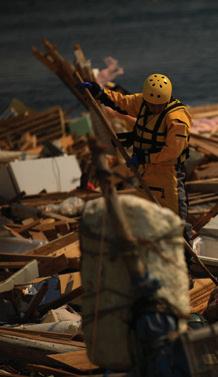
The next few years were spent traveling to Taiwan and New Zealand and then achieving my personal goal—to go from the top of North America to the bottom of South America. I would walk 50 kilometers in the summer and 40 in winter. Thankfully I achieved this before the pandemic in May 2019. Along the way, I met many people who were interested in what I was doing and my riyaka, and I could share with them my experiences about Tohoku.
Definitely the famous Uyuni Salt Flats in Bolivia. I also enjoyed the Yukon with its tundras, auroras and autumn foliage. In South America, the highaltitude lakes in the Andes Range were stunning, particularly in Huaraz, Peru. Monte Fitz Roy in Patagonia was also breathtaking.
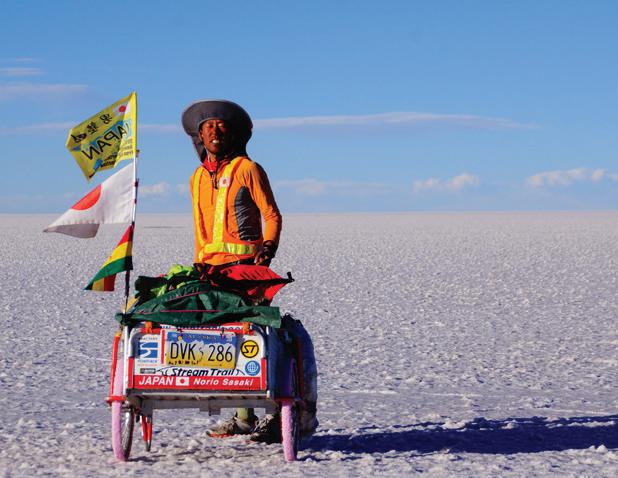
Sometimes I write or submit photographs from my travels, but mostly I travel as budget-friendly as possible, work odd jobs where I can and save up, then go on to my next destination.
I also have sponsors who support me, like Streamtrail. They supply me with their durable, waterproof dry bags. They have protected my food and supplies from nosy grizzly bears while I was traveling through North America. I saw many but thankfully they couldn’t smell the food as it was really packed in there.
For sure. I’ve temporarily moved away from the riyaka and been exploring the waters surrounding Japan with my stand-up paddleboard. In my previous jobs as an ocean guide and lifesaver, plus my time in the defense force, I had to learn ocean navigational skills. What are some challenges you face when traveling by SUP?
This goes for all solo travel, but you have to be responsible not only for yourself but also how you represent your community. Because stand-up paddling is generally an “easy” activity, there are many people who get stranded or hurt. SUP boards are very big, long, buoyant and light, so they are prone to getting caught by currents and it’s easy to lose your balance especially during strong wind. Mine is inflatable making it easier for it to get swept away.
SUPs are still relatively new in Japan and can’t carry as much on board. I try to avoid risk by planning, because it would be meiwaku (a bother) to other paddlers in Japan’s budding SUP community if I am irresponsible and get hurt or stranded.
While I’m at sea, all I’m thinking about is if the winds or currents change and getting to my destination safely before nightfall. If the wind is propelling you forward, that’s great, but if it’s working against you then you have to make yourself as small as possible and paddle hard. I use my smartphone’s GPS which works without reception, and also rely on wind direction and the clouds. At most, it’s taken me a full day to get to my destination, which means eating on board, and yes, going to the bathroom.
I avoid going to high-traffic areas, for example major ports, fishing or ferry routes, and waters near navy or defense force bases. What’s in your bag?
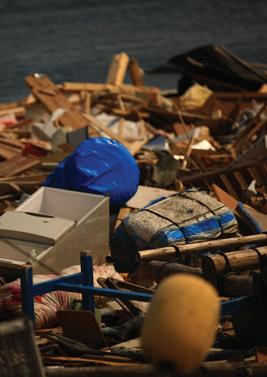
I have to live as cheaply as possible, so I need to pack and make smart purchases. Food, clothes, sleeping bag, tent, solar panel to charge my phone and something announce where I am, whether that’s a whistle, rescue mirror, SOS reflection sign or smoke bomb.
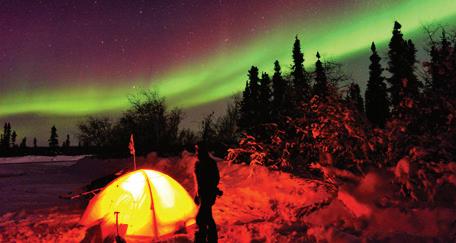
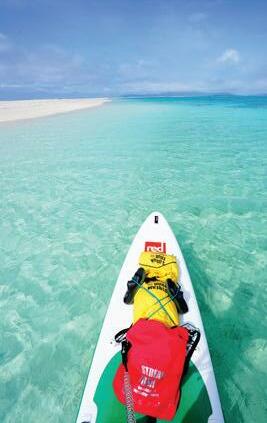
Last winter, I visited the Shiretoko Peninsula in northeastern Hokkaido where you can see drift ice. It was freezing but really beautiful. Currently I’m on the opposite end of Japan at the Yaeyama Islands of Okinawa, island hopping to mujintou (uninhabited islands). I recommend Okinawa’s Kerama and Hatoma islands. What are your future plans?
As international travel eases up, I’d like to bring my riyaka to the Himalayas, Africa and Iceland. I’d also like to travel by SUP from Ilulissat, a coastal town in western Greenland, exploring the southern part of the country. v


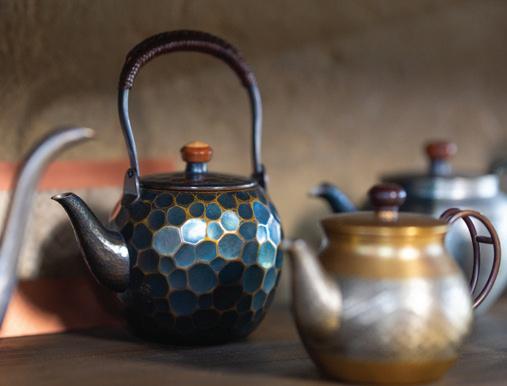

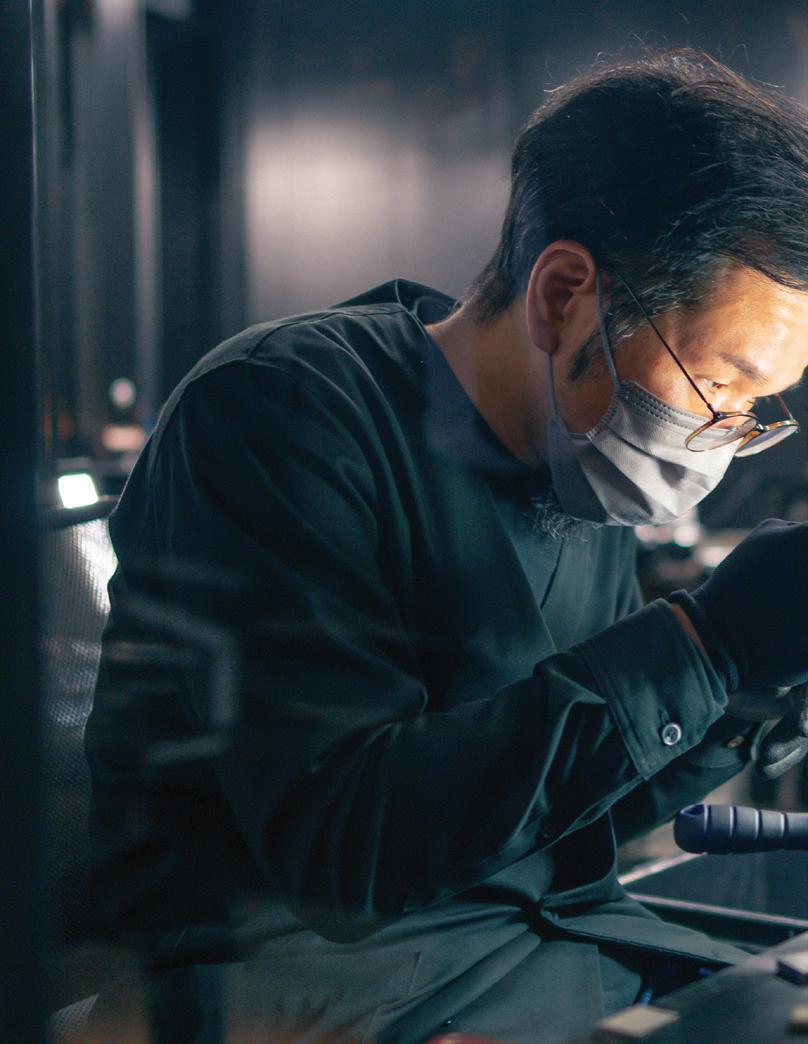 BY DEREK YAMASHITA
BY DEREK YAMASHITA

At the center of Niigata Prefecture, in the wide open Echigo Plains, is an accumulation of more than 400 years of metallurgy and craftsmanship excellence in the artisan city known as Tsubame Sanjo. Heralded as producers of some of the finest tools and crafts across Japan—and the world—this city is a leading producer of metalware including prized Japanese chefs knives, teapots, utensils and more. Travelers intrigued by Japan’s never ending obsession with perfection can explore the open factories here and even take home some prized Japanese crafts.

In the face of an aging population and ever increasing pressure from mass production and global competition, the master artisans of Tsubame Sanjo came up with an innovative open factory system where visitors from around the world are welcome inside with some of Japan’s most famous artisans.
The Origins of Tsubame Sanjo’s craft heritage started from nail production to meet the needs of a burgeoning Edo (the ancient name for Tokyo) during the early 1600’s of the Edo Period. It is believed that farmers in this region began to produce these nails to supplement their income when devastating floods would wreak havoc on the farming industry.
The rapid growth of the new capital of Japan, as well as many great fires, led to a boom in demand for not only nails, but also other tools to meet the construction needs that Tsubame Sanjo rose up to meet.
The accumulation of wealth, knowledge and expertise then allowed Tsubame Sanjo to expand into agricultural, kitchenware and many other crafts as it cemented itself as one of the centers for crafts and manufacturing in Japan.
In the face of mass produced products and a severe drought of new recruits willing to become artisans, the region made a major push in the past few years for producers to open up their factories to visitors under what they call the Tsubame Sanjo Open Factory System.
Under this program many of the region's main producers allow guests onto their factory floors where they can see the entire production process for their products and even have tours with the artisans themselves.
The primary goal of this is to convey to the world the detailed work and mastery that goes into all of their products and have consumers gain an appreciation and understanding for the value behind this quality.

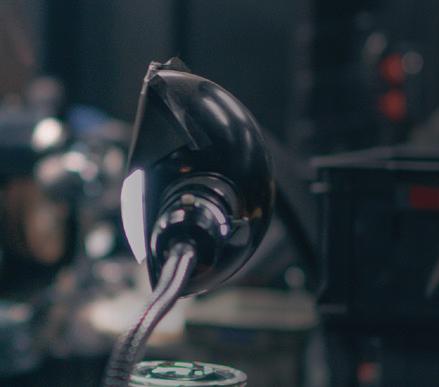

A second goal of the open factory system is to inspire youths to take up the arduous career path of becoming a disciple and embarking on years of dedication to join the ranks of these prestigious artisans. With this in mind, school trips often take their students to this city to educate them on Japanese craftsmanship.
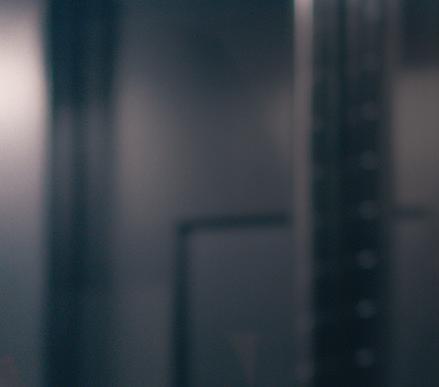
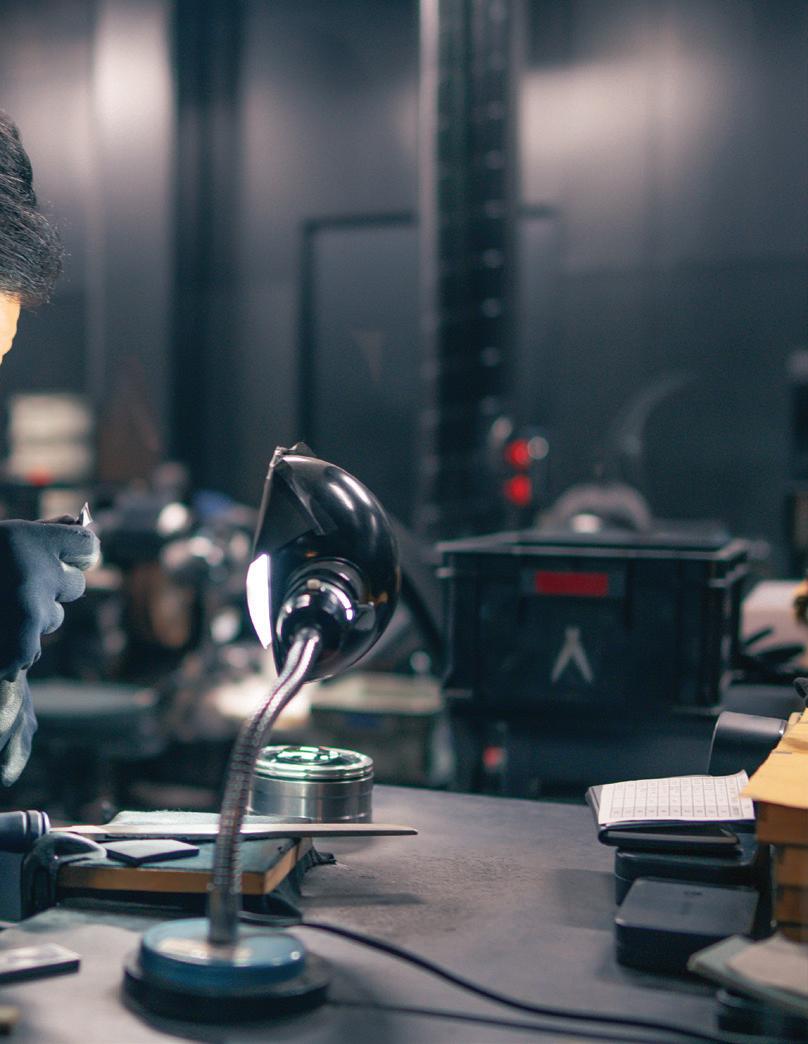
Some notable examples of Tsubame Sanjo’s open factories include Gyokusendo, a copperware producer dating back to the early 1,800’s that produces some of Japan’s finest teapots entirely by hand in their beautiful wooden workshop—largely unchanged from the original construction.
Tojiro, a top producer of Japan’s prized chefs knives is also a must see for those looking to pick up a knife that will last generations. Guests can see how their products blend together machine and handmade techniques to produce knives that distinguish themselves even among Japan’s many incredible knife makers.
Some of these factories even offer guests the chance to work side by side with artisans to learn skills or produce a variety of crafts that they can take home with them. This includes knife sharpening lessons with Japanese whetstones, hammering copper cups and even making your own Japanese chefs knives during certain times of the year.

While Tsubame Sanjo primarily has business hotels in its city center, a short train ride to the base of Mt. Yahiko offers guests the chance to stay at a charming Japanese ryokan in a small town complete with hot spring baths and a delicious traditional Japanese meals featuring the cuisine of Niigata.
You can easily start your day with a hike up Mt. Yahiko and a visit to the vast Yahiko Shrine at its base before catching the train into Tsubame Sanjo to explore the many open factory producers.

Tsubame Sanjo’s factories are open year round, but its surrounding natural beauty are best in the summer and fall.
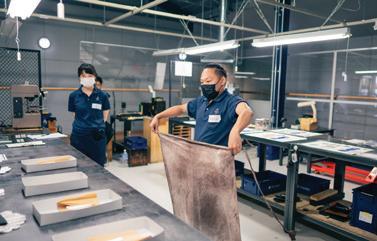
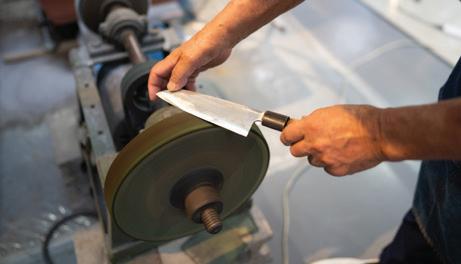
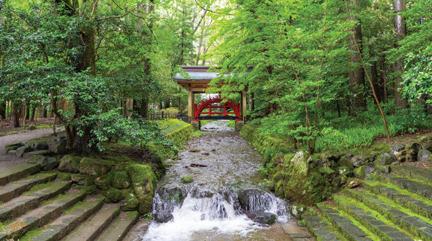



Tsubame Sanjo is just under two hours via the Joetsu Shinkansen from Tokyo Station. It is also situated about two hours by car from Nozawa Onsen and other northern Nagano resorts making it a possible cultural excursion for winter trips.

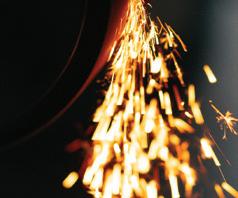
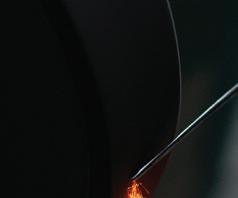
The area doesn’t have much of a digital footprint online in English but you can find more information in Japanese at kouba-fes.jp/history2/


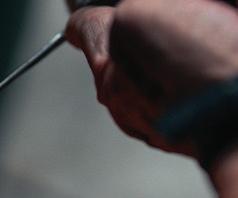
After college, Derek Yamashita chose to explore his Japanese-American roots by starting a life deep in the countryside of Yamagata Prefecture where he found joy in the trails, cycling courses, fi shing and all the area had to offer. In 2017 Derek co-founded The Hidden Japan, a travel company promoting travel to the deeper parts of Japan beyond the big cities by working closely with rural communities to create boutique tours where travelers experience Japan alongside the local people. Find out more at thehiddenjapan.com

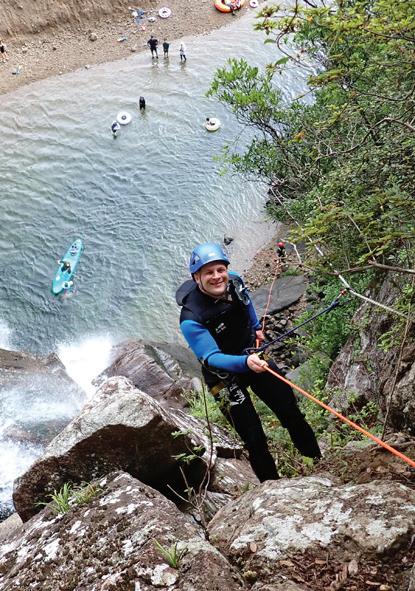
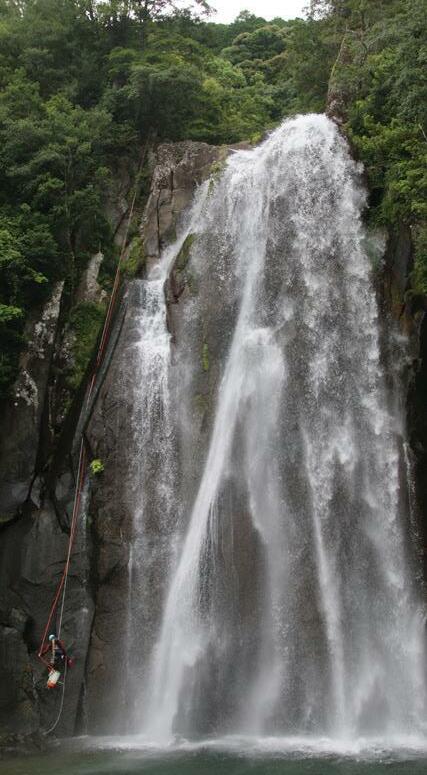
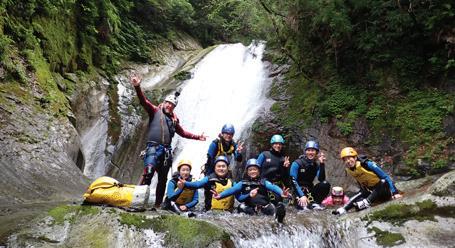 BY ALENA ECKELMANN
BY ALENA ECKELMANN
Hidden in the evergreen forests and deep valleys of the Kii Peninsula is an exciting new canyoning experience. Crystal clear streams and gushing waterfalls beckon active travelers and adventure seekers to Kiho, home of Kansai’s best canyoning experience.
Travelers and outdoor enthusiasts have long been coming to the southern part of the Kii Peninsula to explore the sacred Kumano Kodo pilgrimage trails and the three Kumano Grand Shrines. The outdoor and adventure experiences within the vast area of what is referred to as kii-no-kuni (land of trees) are still a fairly well-kept secret
Mike Harris, founder and owner of Canyons, who has pioneered many of Japan’s canyoning courses, has spent more than 20 years scouring the peninsula’s canyons with his team and literally testing the waters of countless streams and stunning waterfalls. After many exploratory missions they settled on Kiho, in the most southern part of Mie Prefecture, and opened the first canyoning operation in the area.
Canyons Kiho, which opened in July, is Canyon’s fourth base in Japan, adding an exciting new location to their portfolio of worldclass canyoning bases that include Minakami and Kusatsu in Gunma as well as Okutama in the far West of Tokyo. The Kiho team has settled in well. The local community has been welcoming and instrumental in setting up the base at the Osato Water Park, which is popular with locals during summer for its great river pool. One friendly local even made the Canyons signboard and stickers for the base.
The lush native evergreen forest in the Kiho area perfectly sets the scene for nature lovers where beautifully carved bedrock and deep pools beckon for exploration. Float, swim and dive for relaxation in one of the pools or try some daring jumps from the steep cliffs in the canyons.
Kiho is located at the edge of the YoshinoKumano National Park and special permits were necessary to be able to set safety anchors along the stone faces of the canyons. The team spent thrilling hours and a lot of rope work in order to bring canyoning to the area. Kiho is a small town of 10,000 souls who mostly live in picturesque villages surrounded by terraced rice paddies dotted across 80-square-kilometers.
A chilled “inaka ” vibe permeates through the area and makes stressed city-dwellers feel relaxed immediately.
With mild temperatures yearround, and little or no snow fall in winter, the water temperature in Kiho is great even at the beginning and end of canyoning season when waters are quite chilly elsewhere.
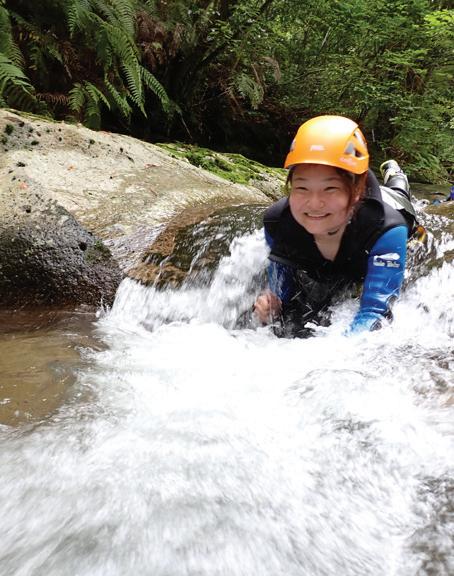
Canyons Kiho currently offers two half-day courses that can be combined to create a combo full-day adventure of awesome jumps and slides. These course are level 2 to 3, but can be tailored to cater to total beginners as well as experienced adventurers from age 13 to those over 60, as long as you are fit and not afraid of water and heights.
The Hisetsu Course is named after the grand waterfall, Hisetsu Taki, a 30-meter drop that is the end-point and highlight of this two to three-hour easily accessible introductory level course. The
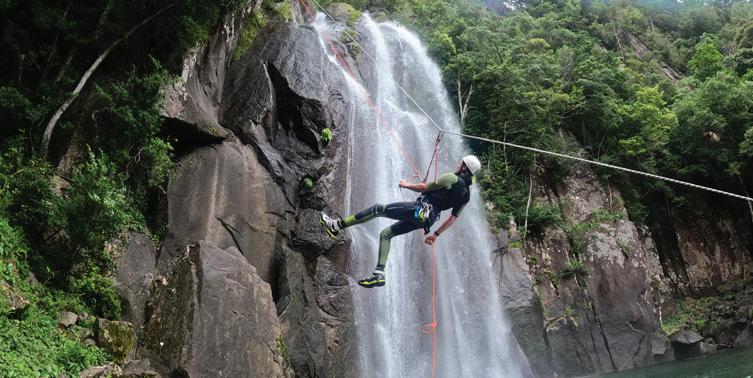
Hisetsu Campsite just below the fall is one of the best campsites in Japan.
Rental tents and cottages, BBQ equipment and different choices of BBQ and hotpot sets are available to cater to all tastes. There are several sauna tents and a range of activities making it a perfect place to stay near the Canyons Kiho base. Canyoning and camp packages are also available.
The three to four-hour Kiri Canyon Course, named after nearby Kirihara Village, features slides up to 20 meters
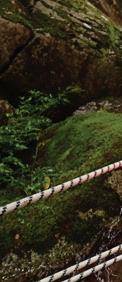
with 45-degree angles and waterfalls of up to 15 meters in height, making it a bit more challenging. Journeying through this awesome canyon gets your adrenaline pumping and will test your limits.
Each experience starts with a warm welcome and check-in at the reception area, followed by a tour briefing and safety talk. Experienced guides carefully monitor participants and ensure a safe experience throughout. Groups have a maximum of 12 participants but experiences for families or group of friends can be customized by request.
Canyons guides are excited about the potential for canyoning in Kiho and throughout the Kii Peninsula. They are already scouting out new courses of varying levels for the 2023 season, so be sure to follow them to hear about new tours, some Level 4+ for the experienced canyoning aficionados out there.
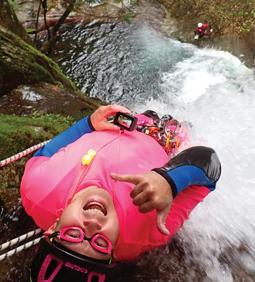
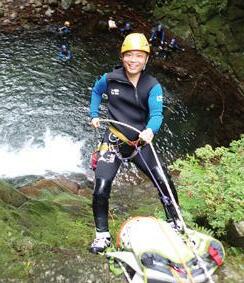
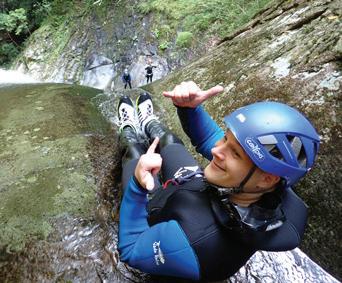
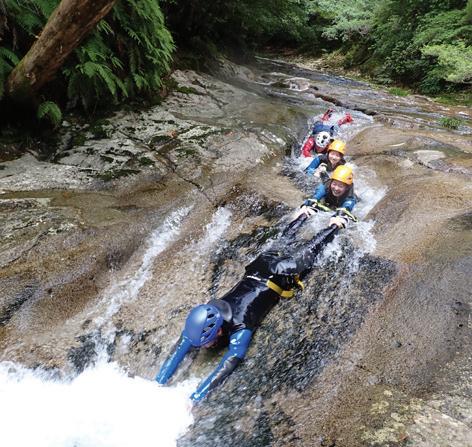
Kiho borders on Shingu, a larger city and transport hub in Wakayama Prefecture, located just across the
Kumano River where it flows into the Pacific Ocean. If you head toward the coast north of Kiho, you’ll find the 22-kilometer stretch that is Shichiri Mihama Beach—Japan’s longest. The Kiho Coastline, which is part of the Nanki Kumano Geo Park, is the breeding ground of sea turtles who return each year to lay eggs.
The Iseji Route of the Kumano Kodo follows the coast and cuts through Kiho offering great day hikes. A drive along mountain lanes takes you to the famous Maruyama Senmaida Rice Terraces, while around the Kiho base you’ll find equally scenic mini versions of these terraced fields.
With the golden season upon us, an autumn escape to Kodo, Kiho’s canyons and some hiking along the Kumano or a visit to the Nachi Grand Waterfall, is a perfect way to combine adventure, nature and refreshment in the Kii Peninsula.
Canyons Kiho operates from mid-April to mid-October. Bear in mind that the Kii Peninsula receives high amounts of rainfall, this ensures the canyons and waterfalls boast high water levels for exciting canyoning experiences, however during typhoon season operations can be temporarily suspended to ensure safety.
Kiho is three hours by car from Osaka or Nagoya. By train, take the JR train from Nagoya or Osaka to Shingu. The nearest airport is Nanki-Shirahama with direct flights from Haneda twice a day and a rent-a-car service by the airport, a great option that allows you to drive at your own pace across the scenic peninsula. There is also an overnight bus that runs daily between Shinjuku and Shingu. Canyons Kiho offers a pick-up service from Shingu Station or from hotel in the area. Web Connection
Reservations for a canyoning experience at Canyons Kiho and further details about the canyoning courses and nearby attractions can be found at canyons.jp/en/areas/kiho/canyons-kiho v
 BY DANIEL MOORE PHOTOS BY TRENT MAXWELL
BY DANIEL MOORE PHOTOS BY TRENT MAXWELL
Intrepid surfers are known for traveling to the far reaches of the globe to find quality waves.




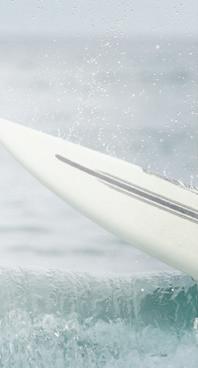
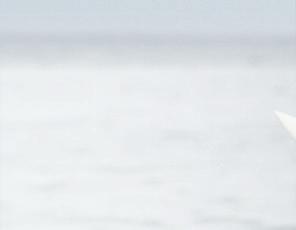
While Kochi Prefecture, in southern Shikoku Island, may not qualify as remote, it is far away from the frenetic pace of Osaka, Tokyo and other large cities in Japan. Bruce Dillon, an avid Australian surfer, laid roots in Kuroshio, a town located in the Hata District of Kochi, and has built a “surf dojo” where aspiring surfers can get their feet wet and get a taste for the surfing lifestyle. The Hata area has numerous surf breaks, delicious local cuisine and a laidback culture that is ideal for extended holidays or remote work away from the crowds.
Intrepid surfers are known for traveling to the far reaches of the globe to find quality waves. While Kochi Prefecture, in southern Shikoku Island, may not qualify as remote, it is far away from the frenetic pace of Osaka, Tokyo and other large cities in Japan. Bruce Dillon, an avid Australian surfer, laid roots in Kuroshio, a town located in the Hata District of Kochi, and has built a “surf dojo” where aspiring surfers can get their feet wet and get a taste for the surfing lifestyle. The Hata area has numerous surf breaks, delicious local cuisine and a laidback culture that is ideal for extended holidays or remote work away from the crowds.
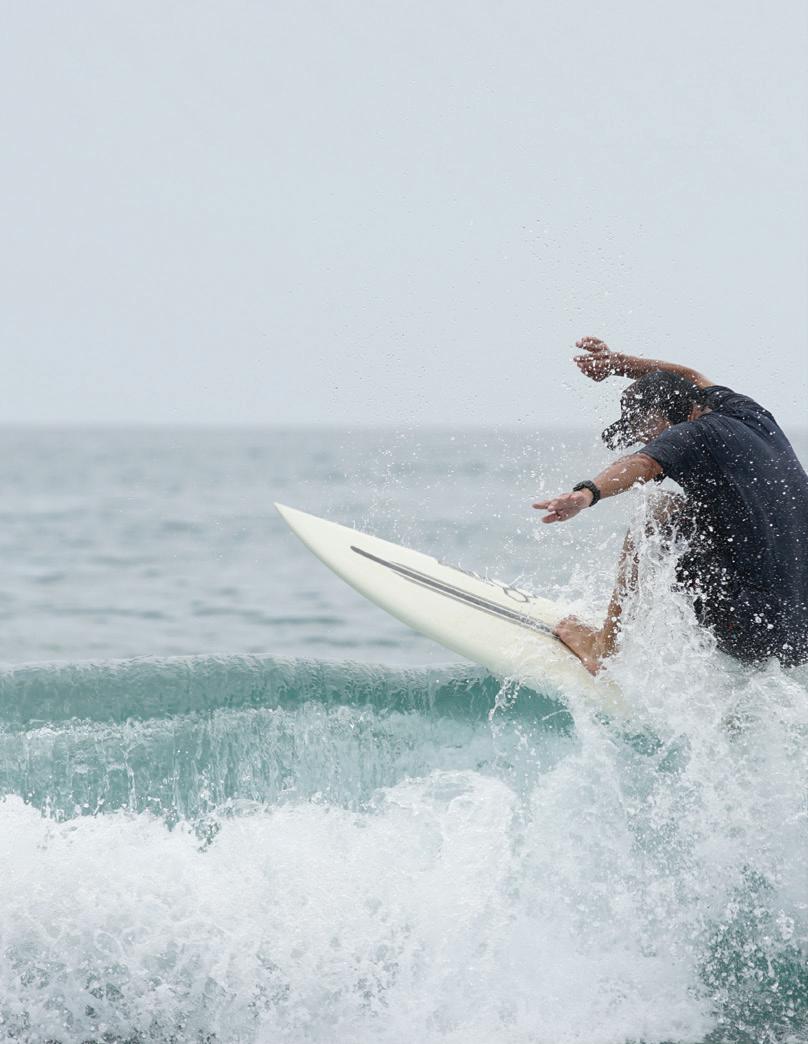
It takes just an hour by plane to leave behind the dense cityscape of Tokyo for the lush mountains and expansive view of Tosa Bay. When you emerge, the inviting warm air and relaxed atmosphere feels like you just landed in Hawaii. Locals’ friendly demeanor reinforces the vibe. It's a two-hour drive from Kochi Ryoma Airport to Kuroshio Town. This is where most of the best surf breaks in Kochi Prefecture begin.
Bruce Dillon, a Gold Coast native who spent the last 25 years in Japan, started Hata Surf Dojo here. Although he moved to Kochi for his own surfing and worked in various fields, he has managed to turn his passion into a successful bilingual surf school. The Dojo offers private and group lessons for new or beginner surfers. Because the Irino Coast consistently provides small to medium-sized waves, it's a great place to learn under Bruce and his instructors' expert guidance. Bruce also makes great jalapeño peppers under the “Hatapeño” label.
This was just my fifth time surfing, and although I occasionally get lucky, I mostly wipe out while trying to stand. I was eager to take a real lesson for the first time and ride some waves. At the safety briefing, instructors discussed where to wait, which types of waves to look for, and the perfect timing for catching waves. It was immensely helpful to understand the theory behind surfing and get a better understanding of the ocean. Although theory and execution are worlds apart, everyone in the group was able to stand and ride at least a few waves. I was hooked and went out with a friend the next morning. The nearby bay offers a wide, manageable-sized wave that doesn't require too much paddling to reach—all pluses for beginning surfers.
Surfing is a lifestyle and speaking with Bruce illuminated many aspects of surf culture. For Bruce, it's all about surfing: being in the water is why he moved to Kochi and what still motivates him to this day. Various companies approach him with opportunities to grow his business or branch into new opportunities, but he has declined, his passion for The Dojo is what has lead to his success. First and foremost, surfing is a lifestyle. When waves are too big for lessons that’s when he gets to surf.
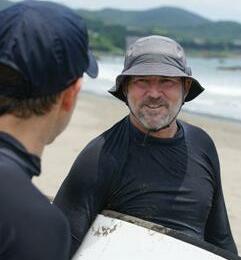
Before visiting Kochi, I had heard rumors of heavy localism tossed around, meaning only locals are welcome at particular surf breaks. Although localism is an issue in Japan's surf culture, knowing some surf etiquette and
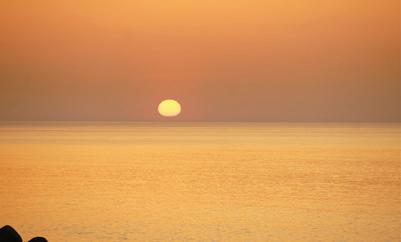
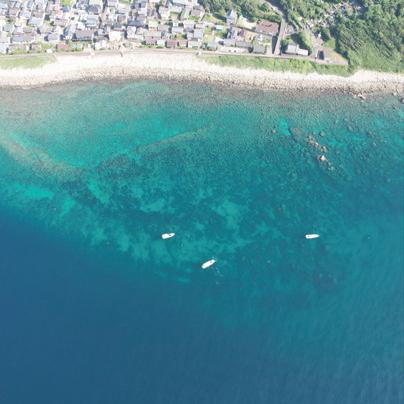

going with a local surfer helps immensely. If you don't know anyone, take a lesson to understand the area or make some friends before going out solo. It's also vital to never surf breaks or in areas beyond your ability level. Like other aspects of etiquette in Japan, effort goes a long way and covers a multitude of faux pas.
Besides the great surf, other cool aspects of the area are the unique accommodation and the local izakaya (Japanese pubs). This area of Kochi doesn’t attract the large number of tourists needed to support large hotel chains, so small guesthouses, and inns feature prominently. Minshuku Kajika and Kuroshio-no-Ie have super friendly innkeepers. While Kajika features home-cooked, Tosa-style meals, Kuroshio-no-Ie is sudomari (stay only) which gives you the chance to go out and explore the food scene. The seared katsuo ( bonito ) at Izakaya Pokopen was probably the best I have ever tried. Solana Surf Camp makes a mean pizza, and Kamochinoyado Cafe & Bar is a fantastic
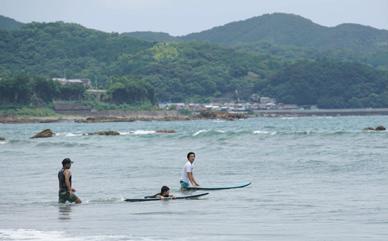
redesign of an old kominka (Japanesestyle house). There are also a few cafes around, but they seem to be sporadically open—perhaps it depends on if the surf is up—so check Google Maps, restaurant's social media pages or call before visiting.
Shimanto City, just 20 minutes away, has more hotels, restaurants and activity options, but doesn't have Kuroshio's surf town vibe where it feels like you are in the "real Japan.”
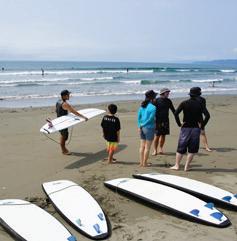
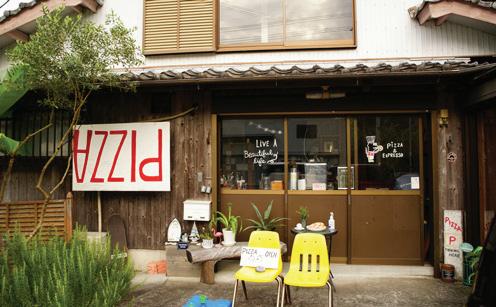
Being close to nature—especially the waves—is what draws people here, and why the locals want some (but not too many) surfers to check it out. If you enjoy exploring Japan and have been thinking of giving surfing a try, you won’t find a better destination to dip your toes into the surfing life and experience some Hata hospitality. v
The best season for surfing in Kochi is from April to November. Typhoon season begins in the summer so check the local weather forecasts to stay safe. For activities besides surfing, spring and autumn are excellent times to be in Kochi when the weather is a little cooler. In autumn, the water is still warm but the weather outside is cooler.
If you’re coming from the Kansai area, you can either take a bullet train to Okayama and then switch to the Dosan Line, or rent a car and drive down. This scenic route takes you across the Great Seto Bridge which connects the main island of Honshu to Shikoku. It takes about three hours to reach Kochi Station. The best way to see Kochi is to drive or rent a car. Public transportation is available but limited and taxis are not available at most train stations.
From Kochi Ryoma Airport, Kuroshio Town is about a 50-minute drive from the Shimantocho-chuo IC on the Kochi Expressway. The toll road ends partway down the coast and turns into a coastal highway. There is also a direct train from Kochi Station, for those who don't have licenses or prefer not to drive.
•
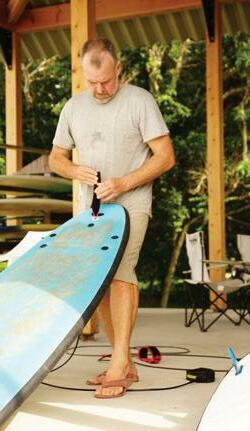
• Whale Watching
Bonito Experience
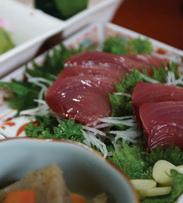
Early Bird The Bread Stand

